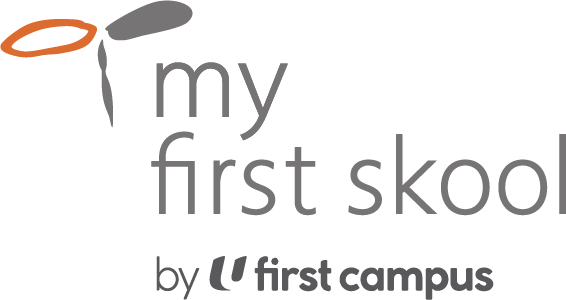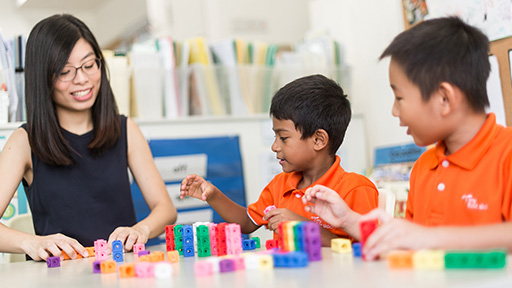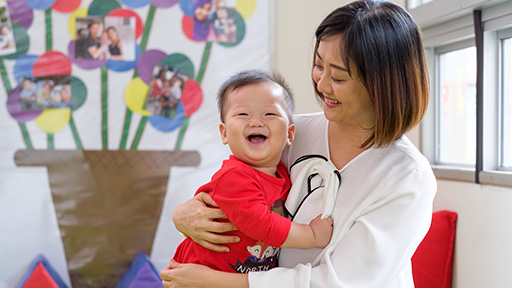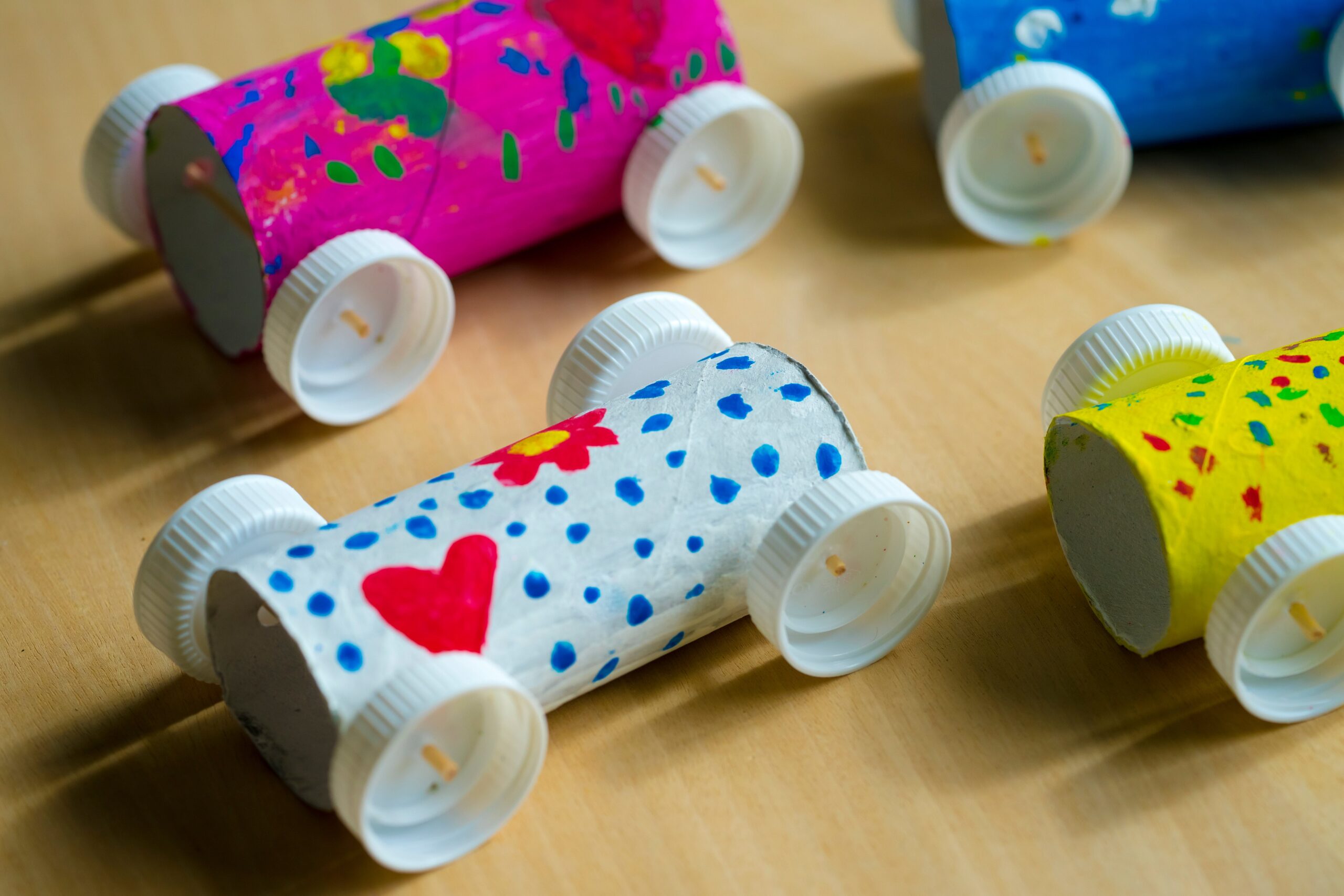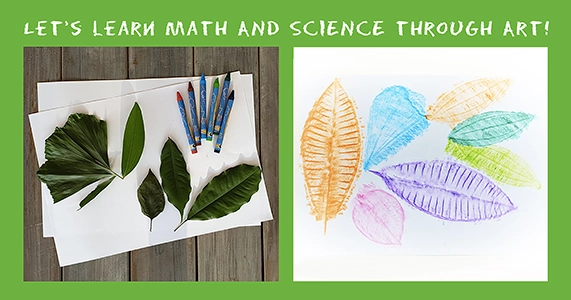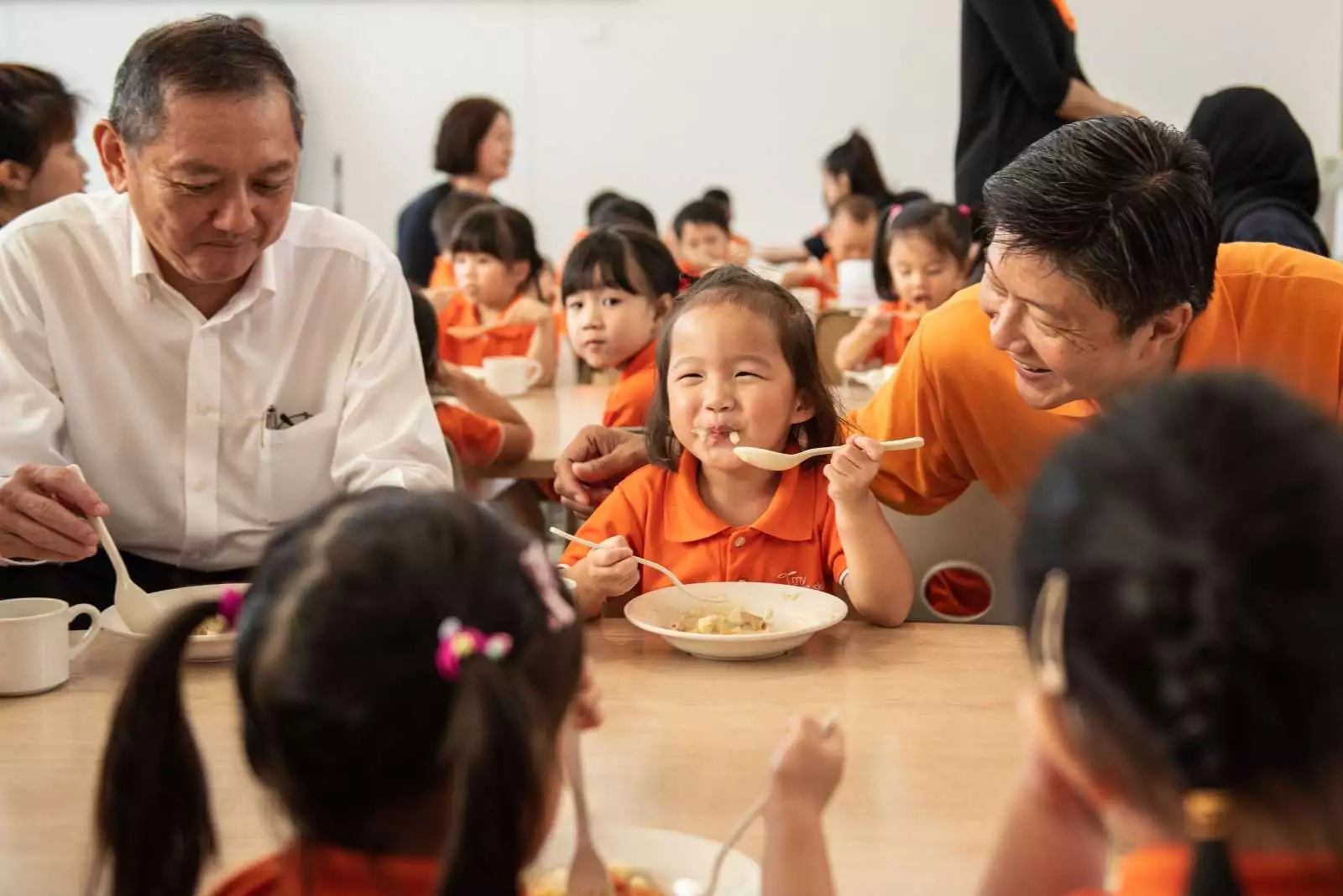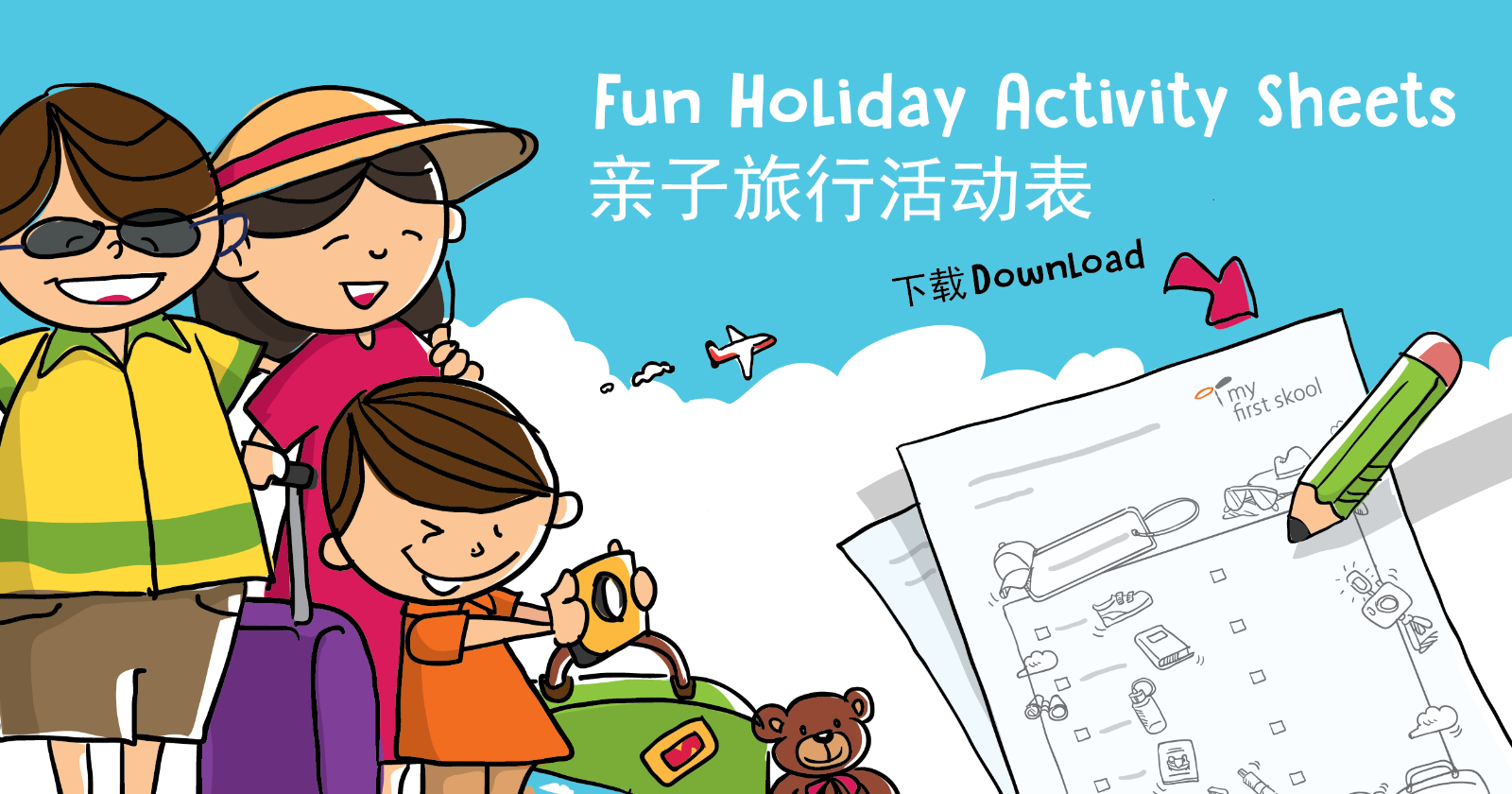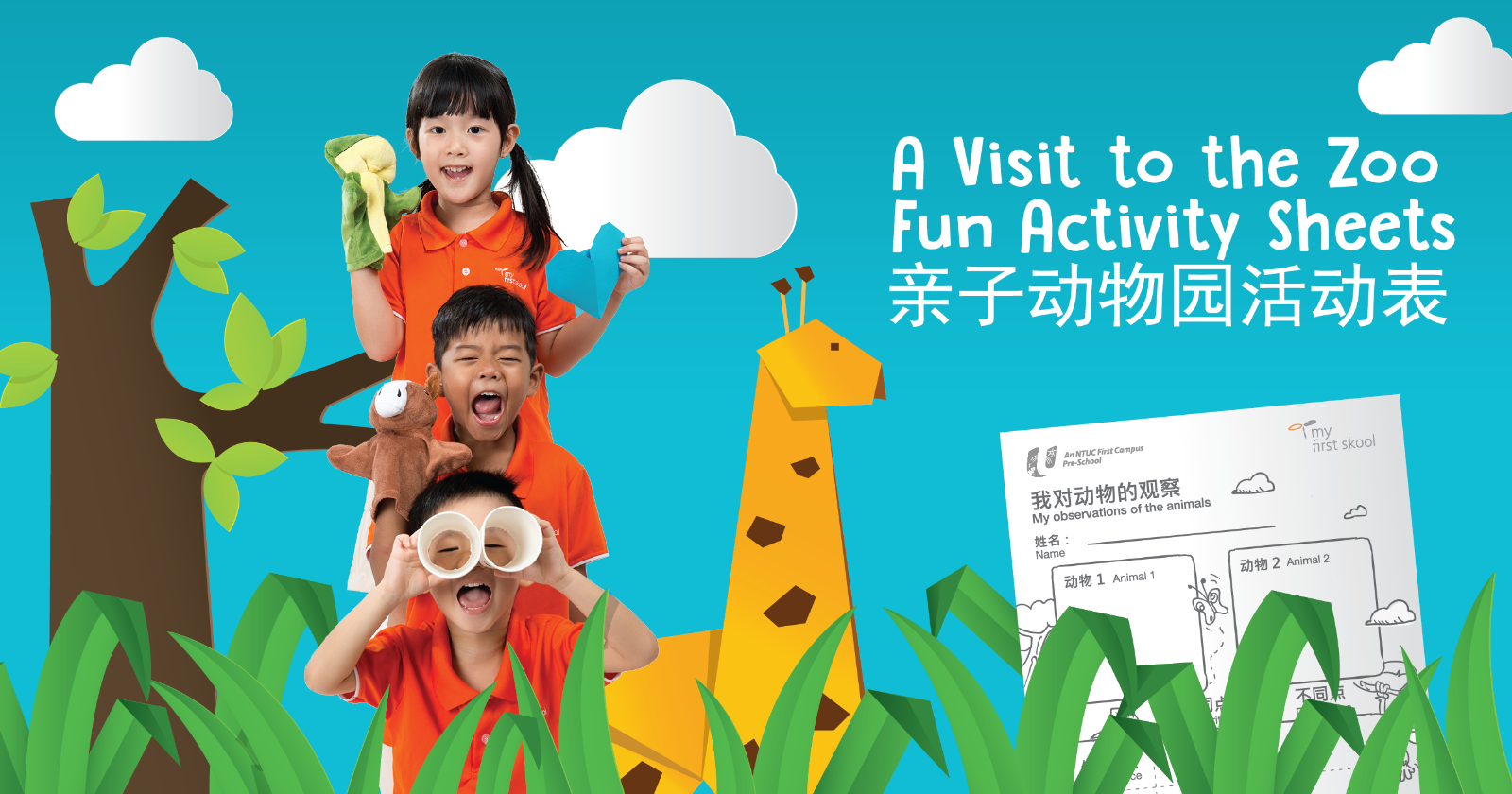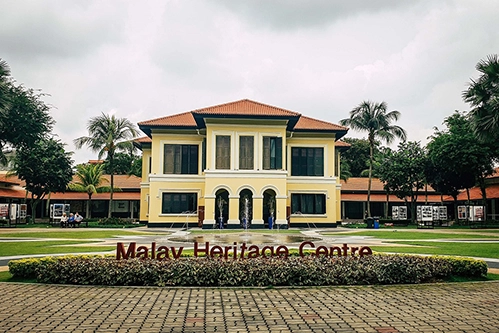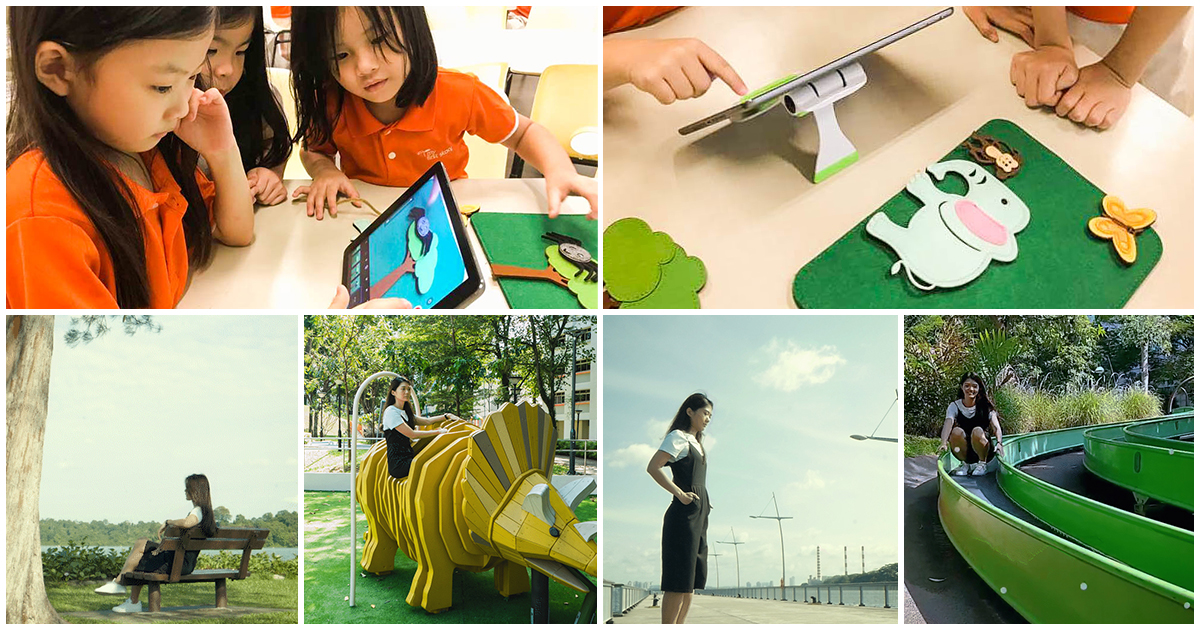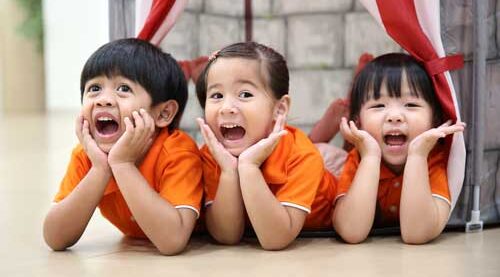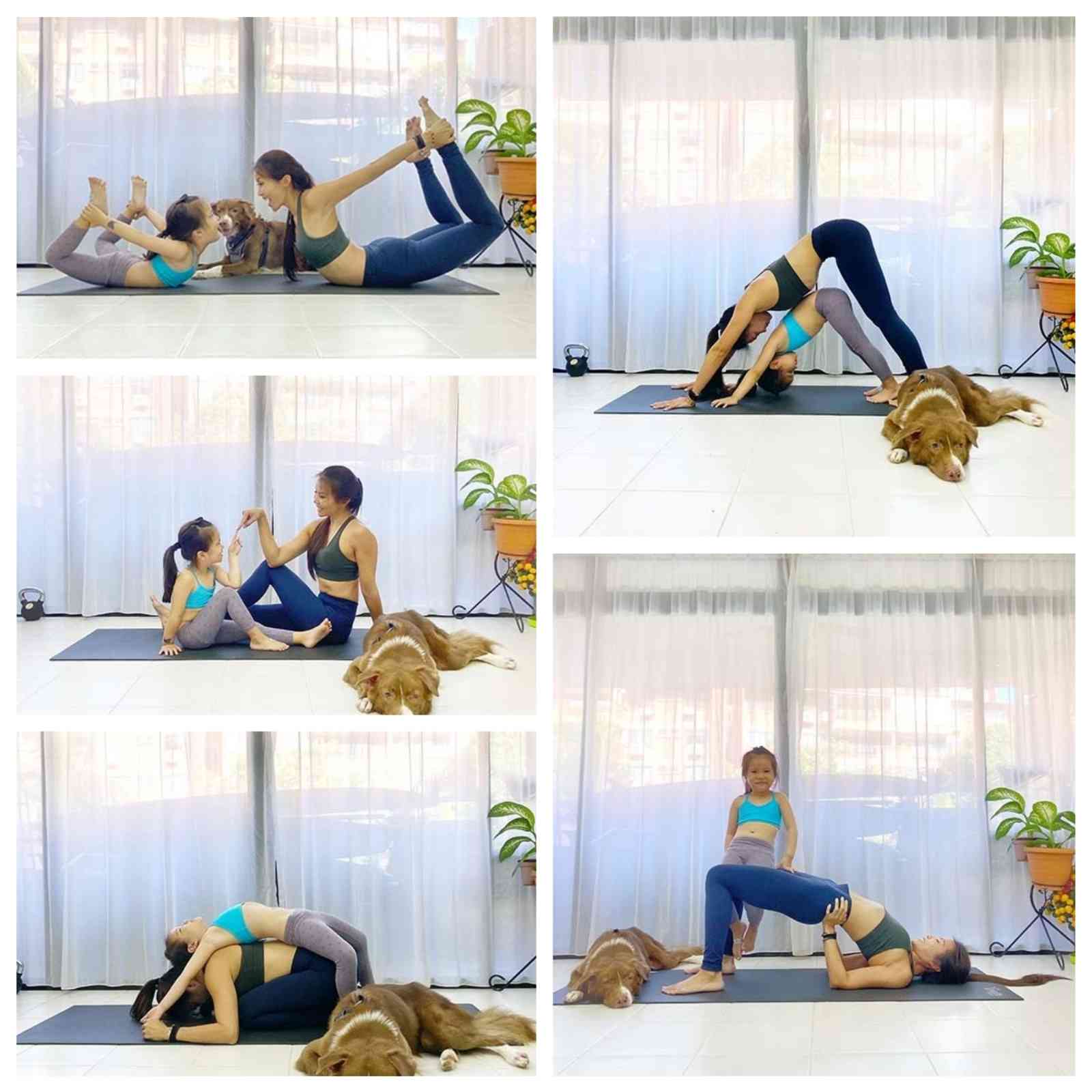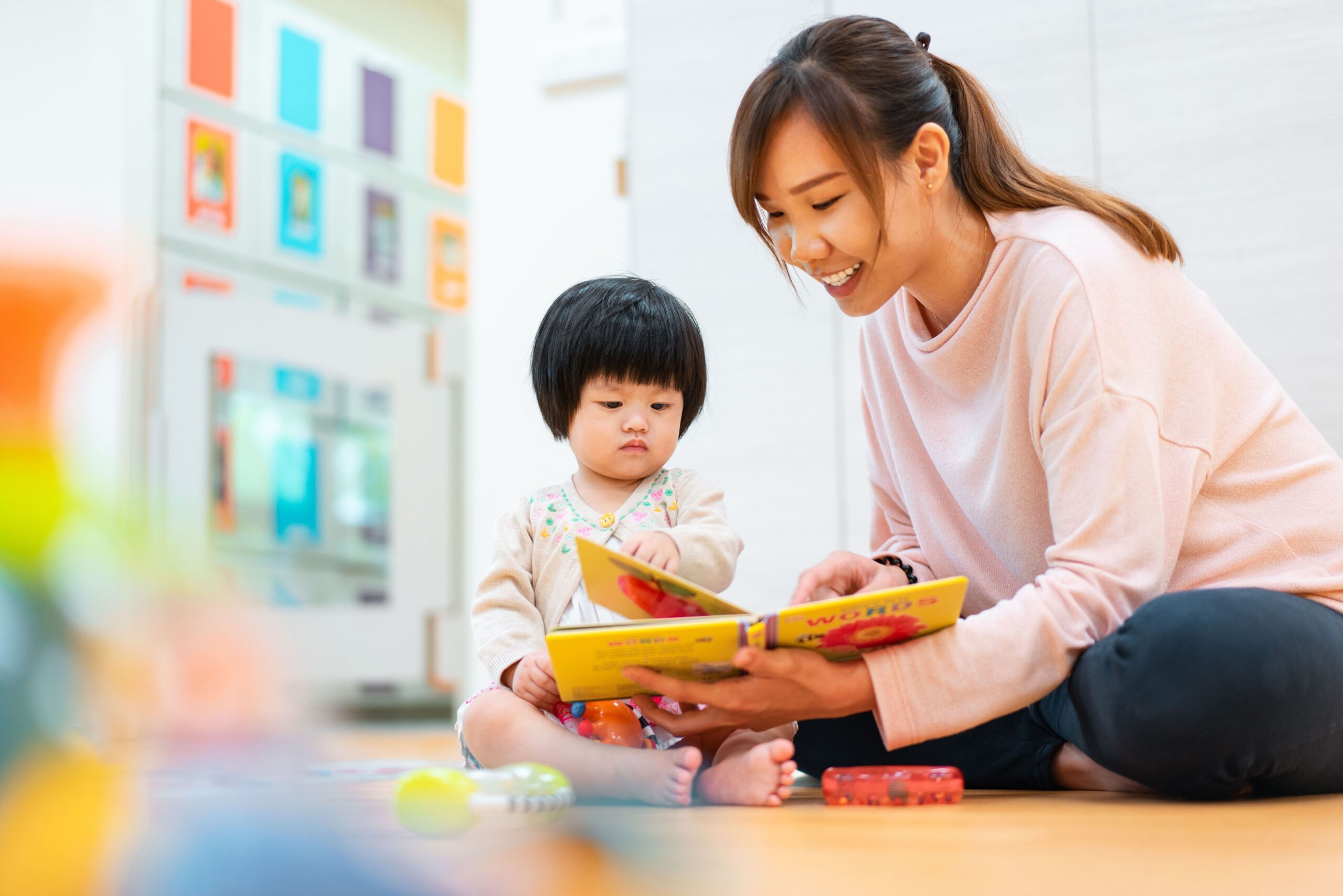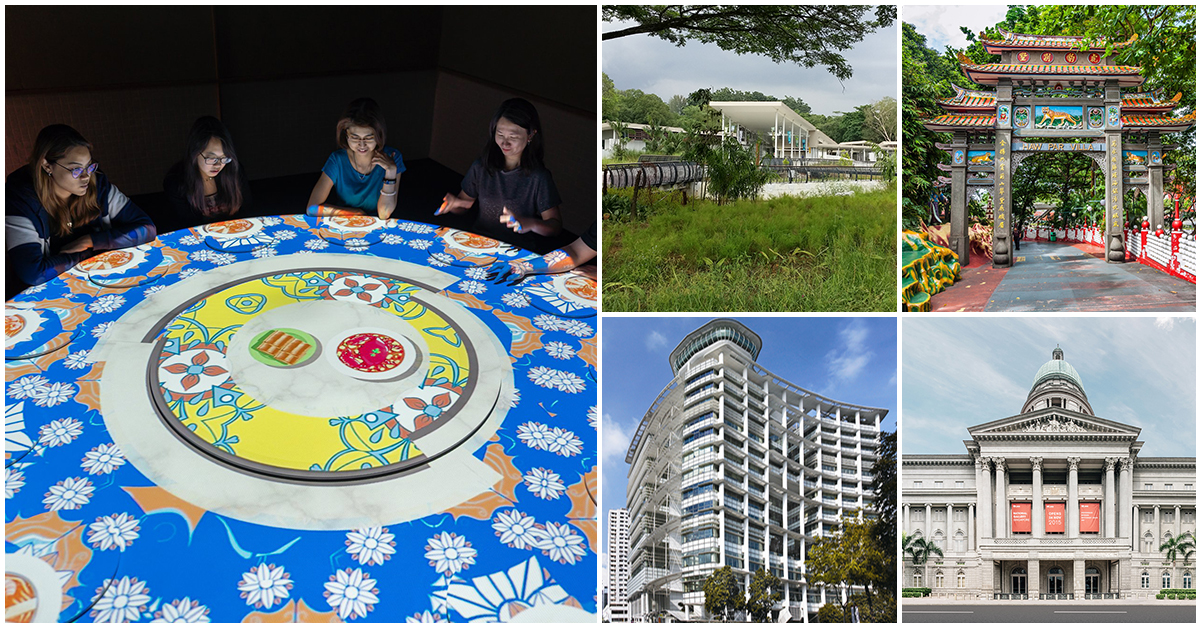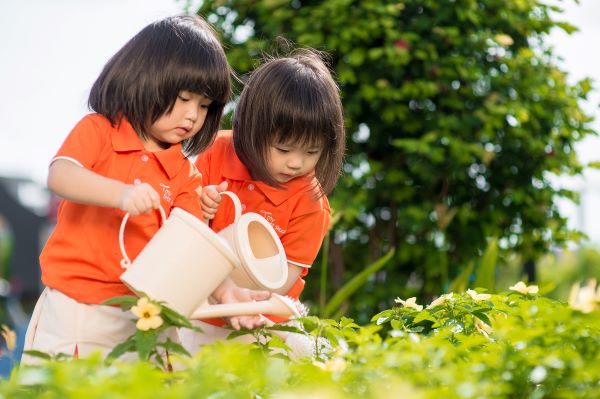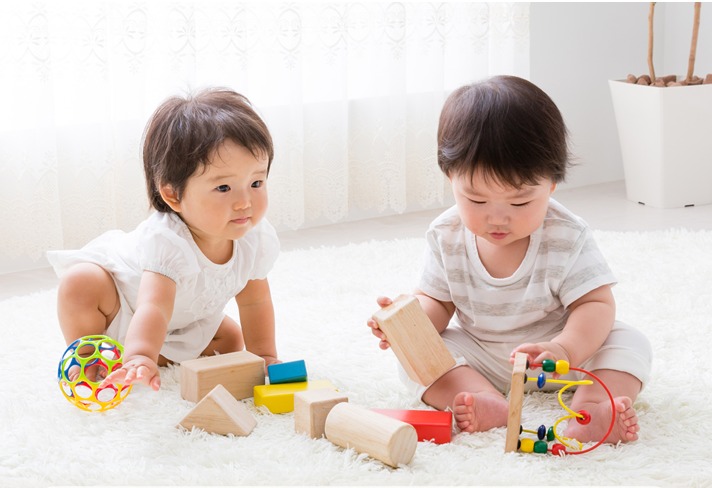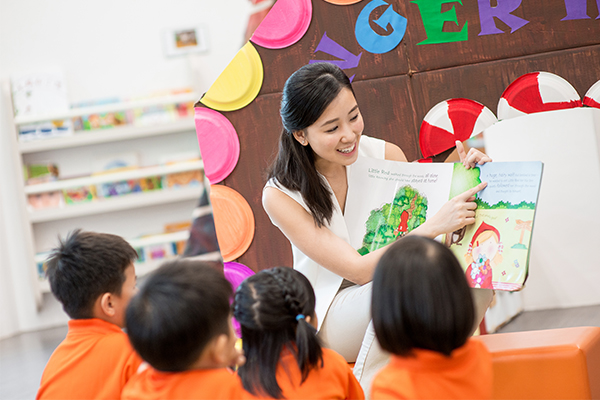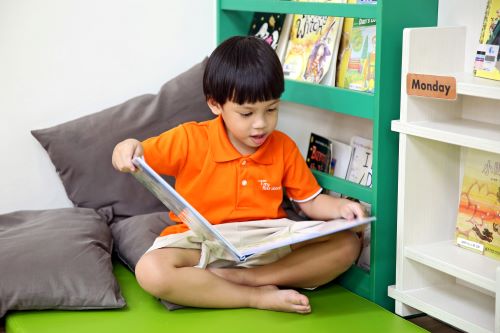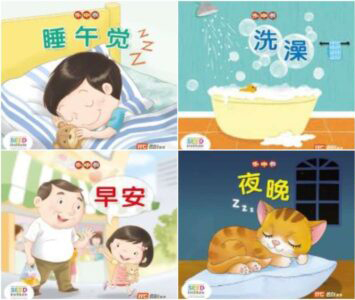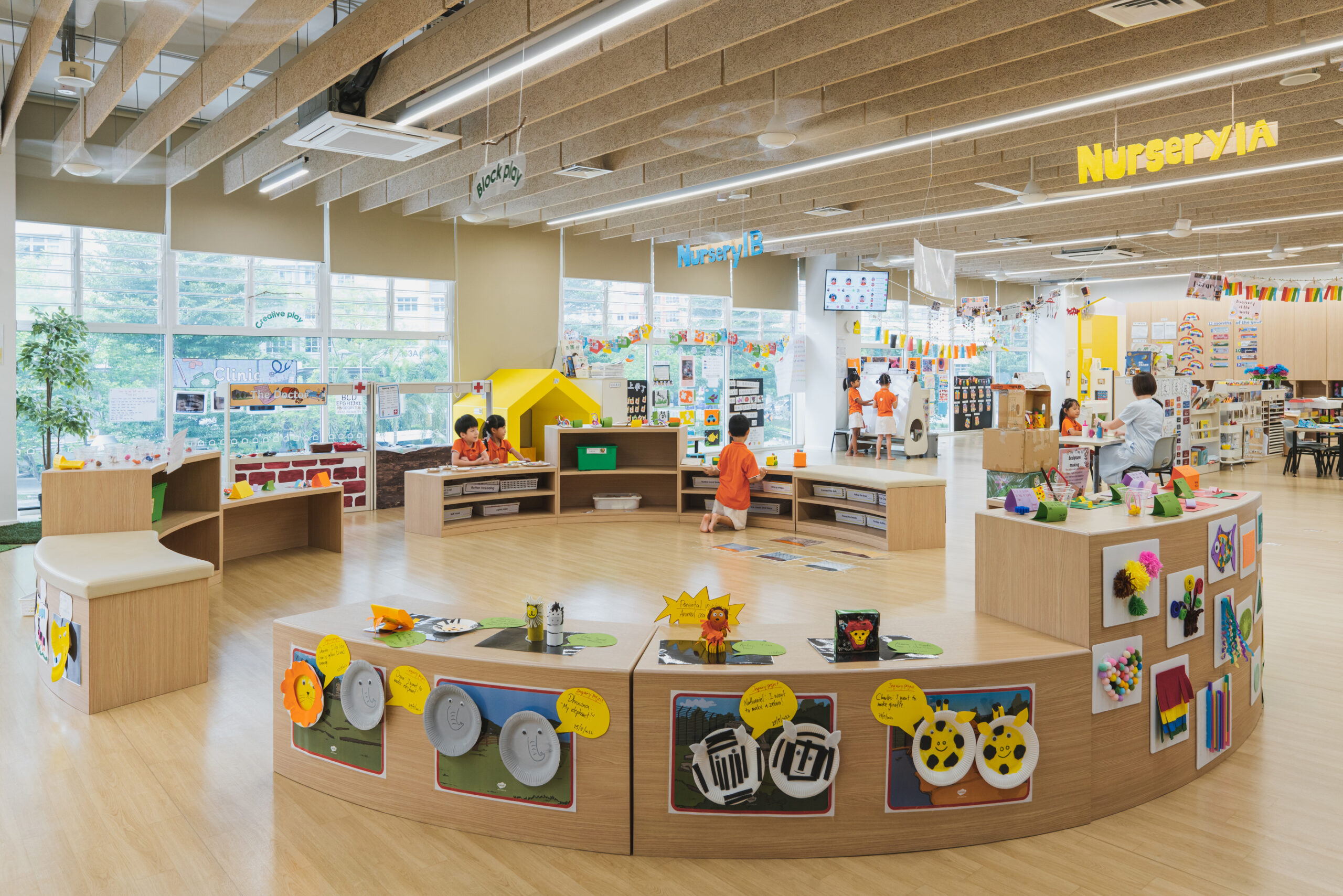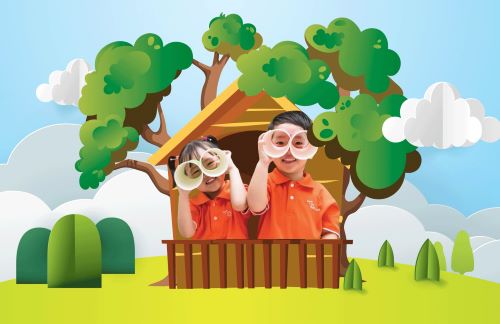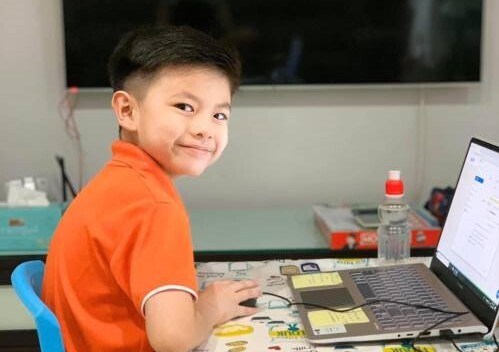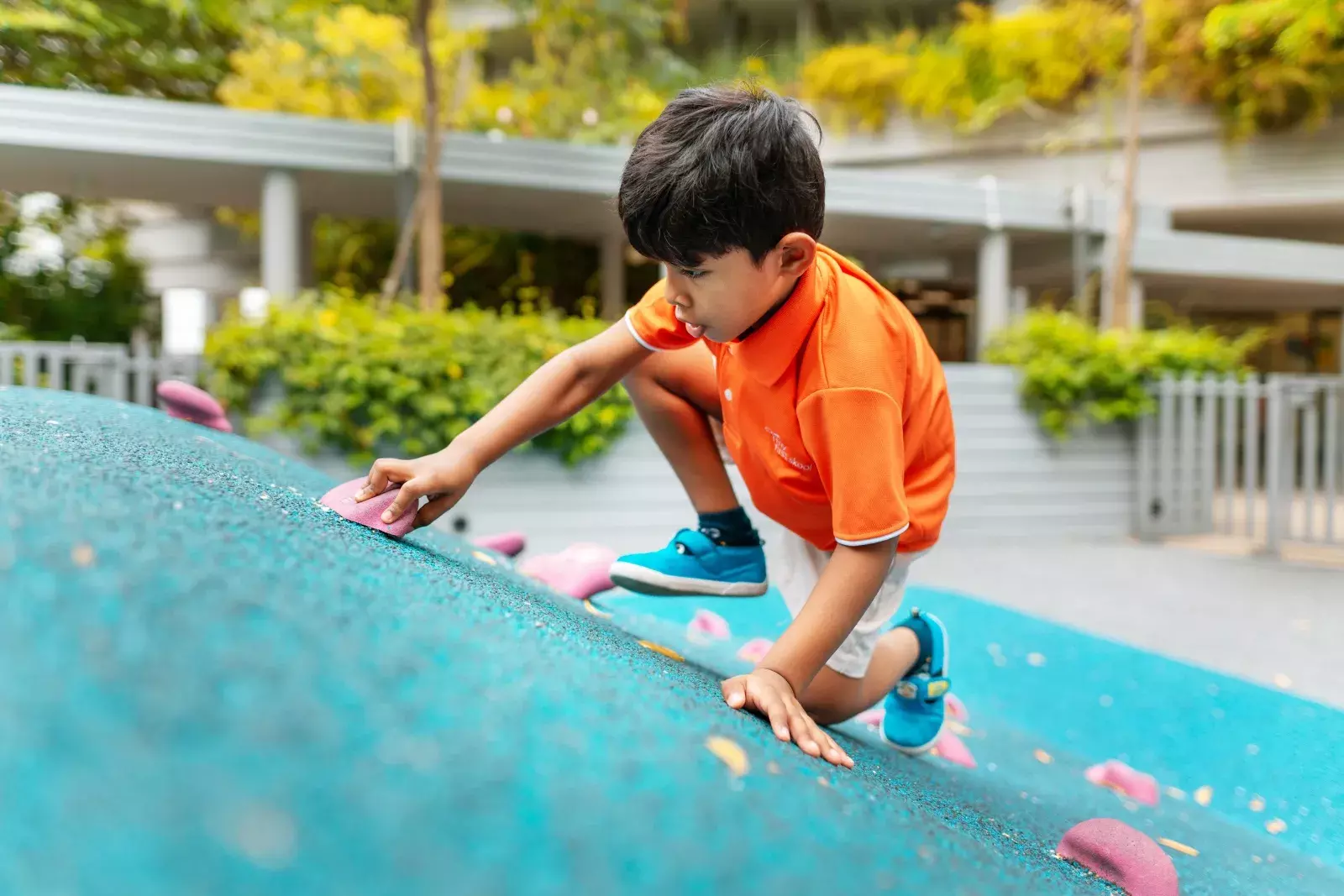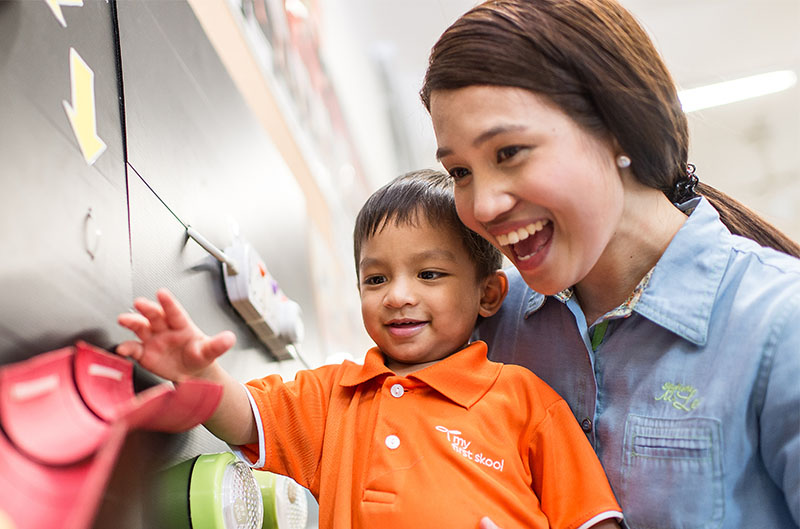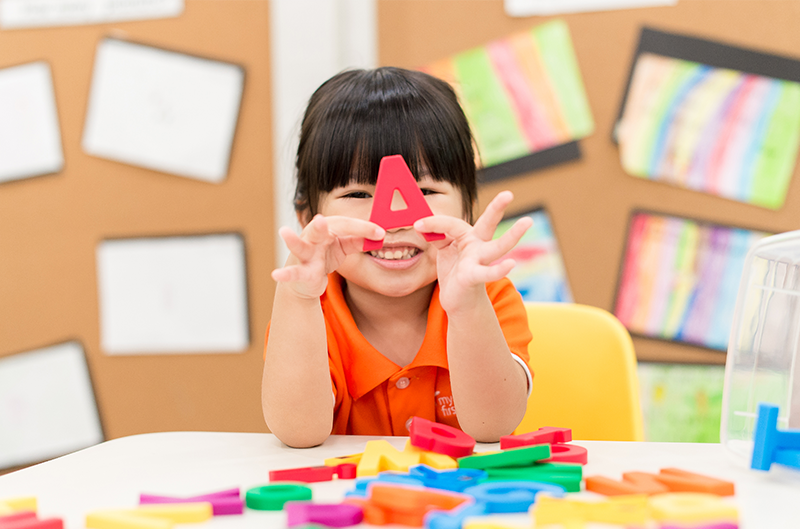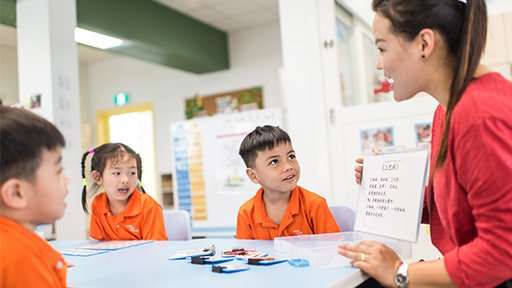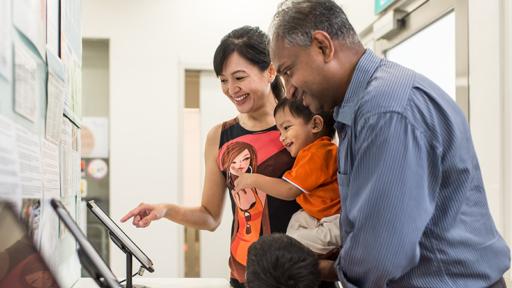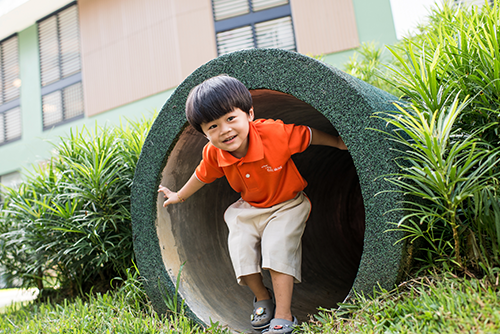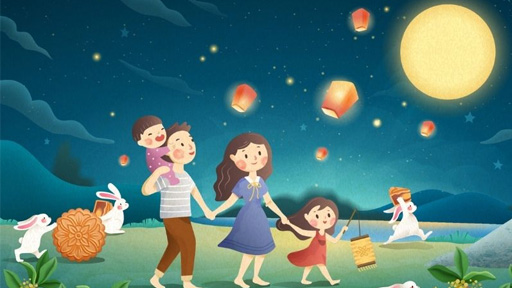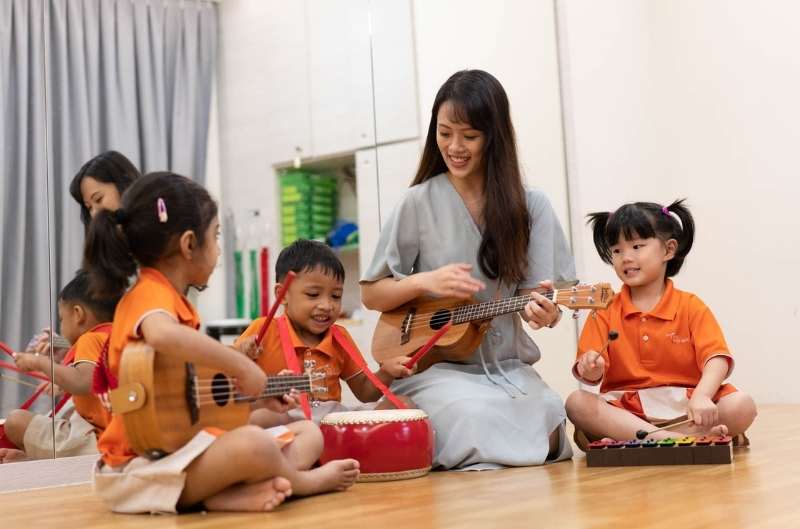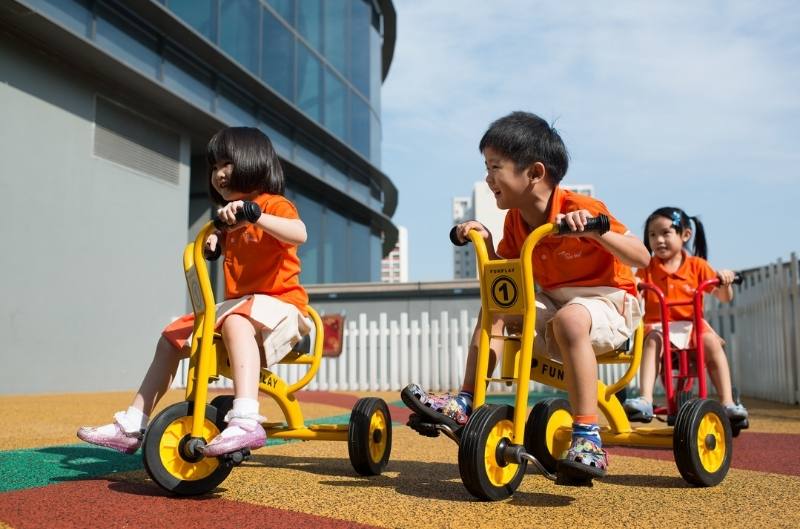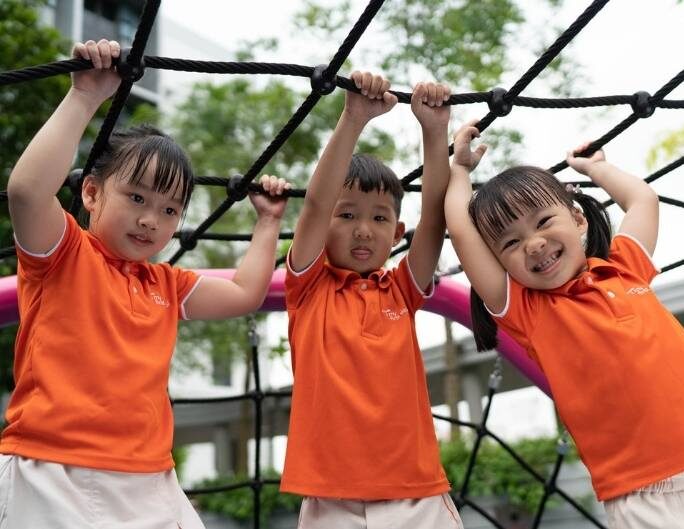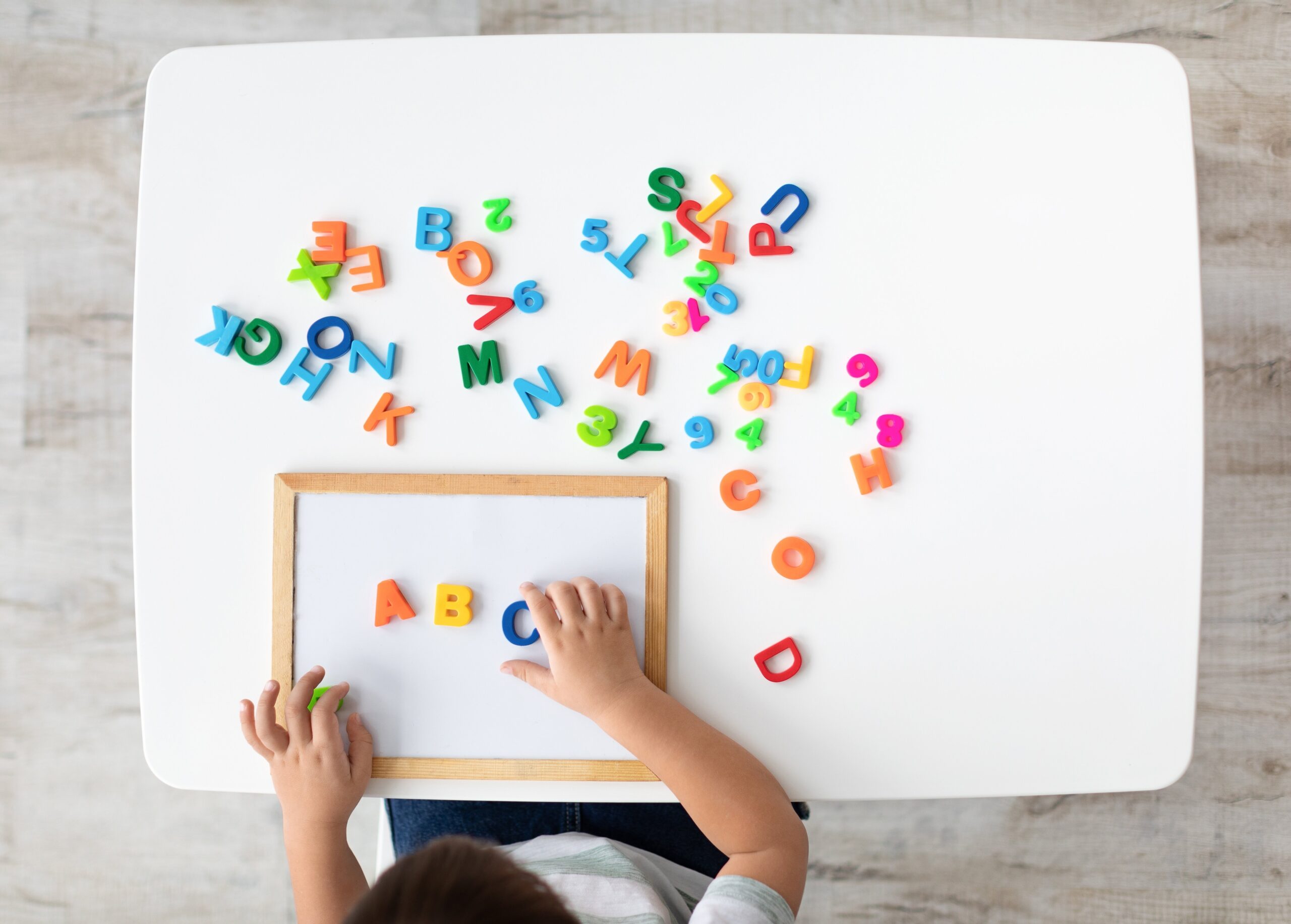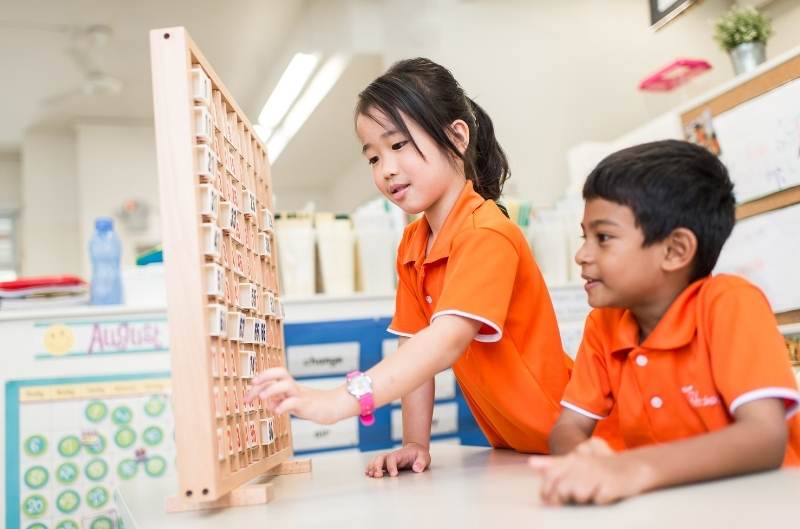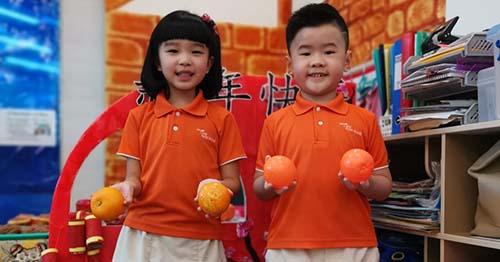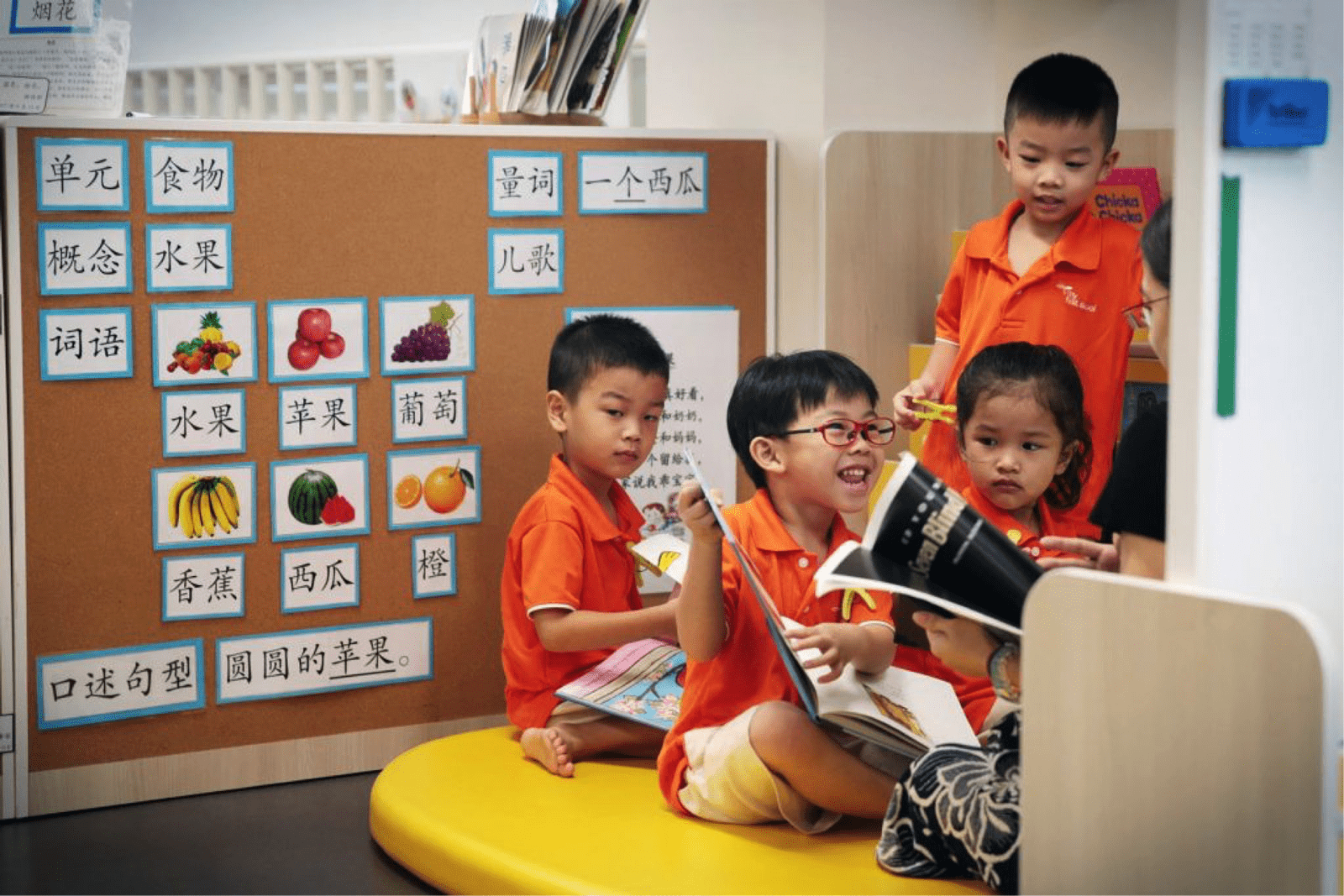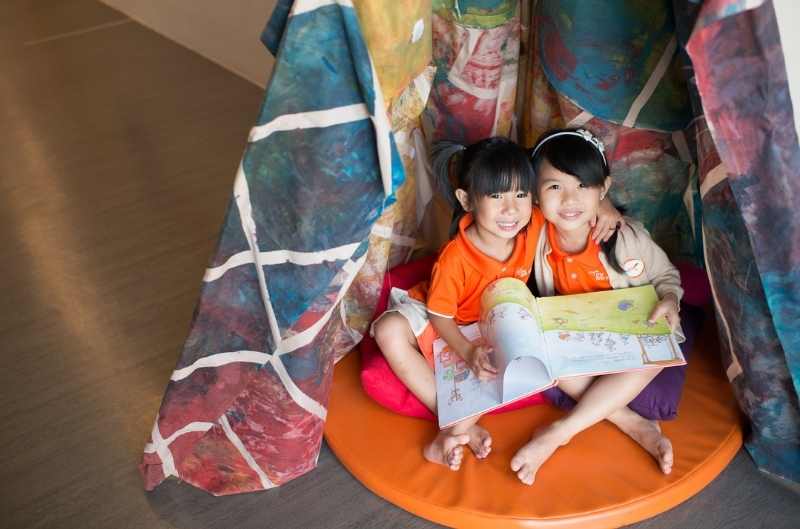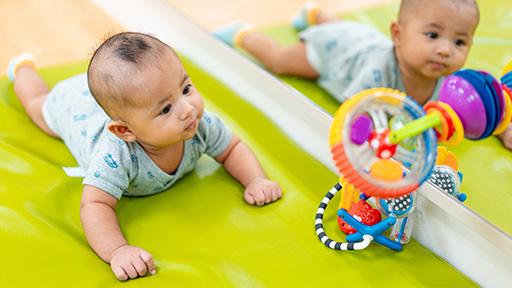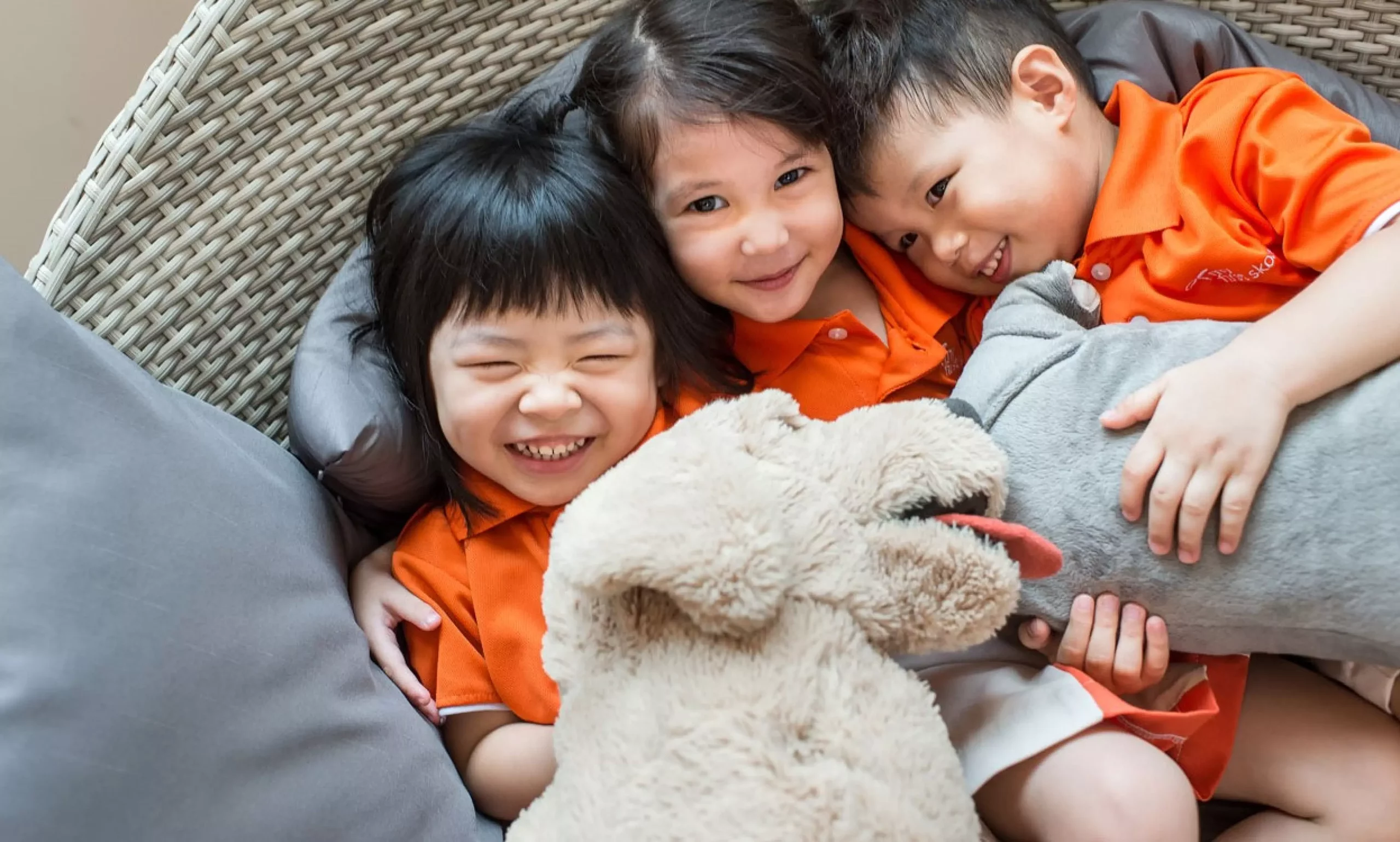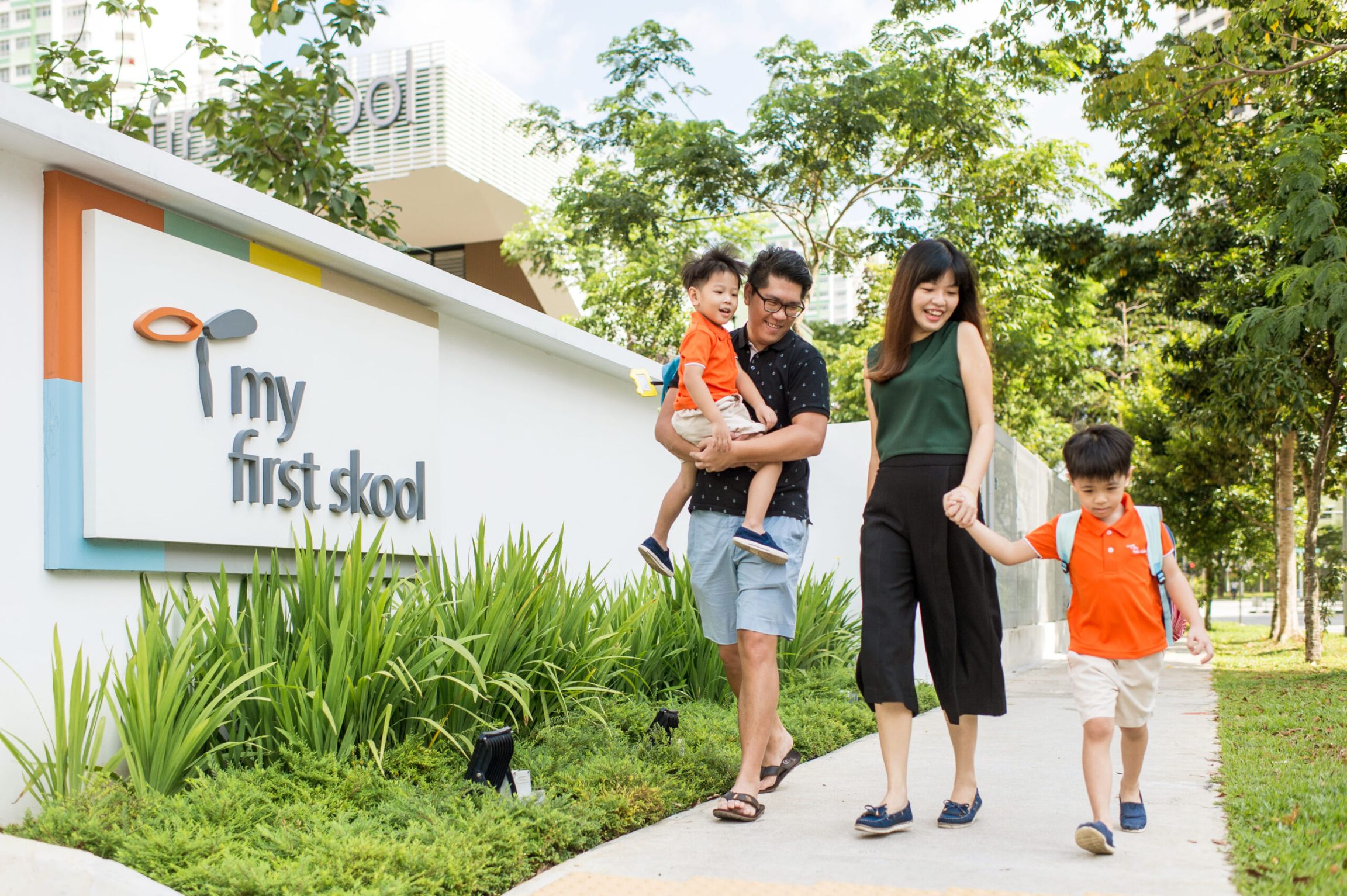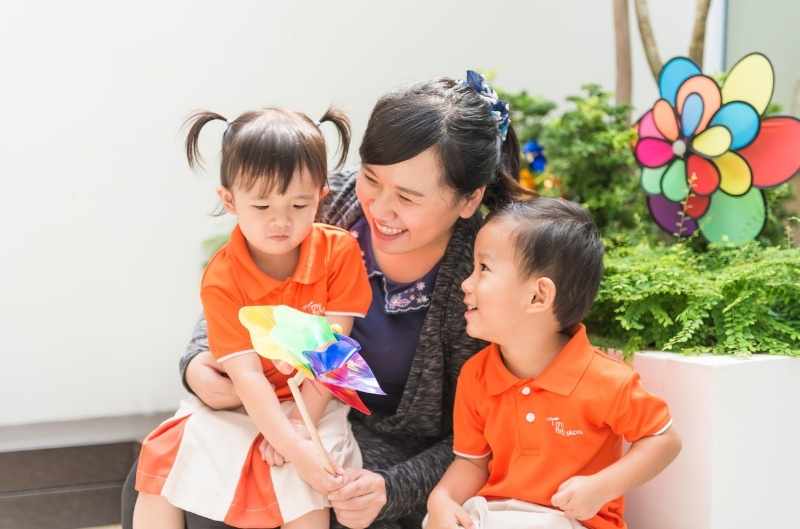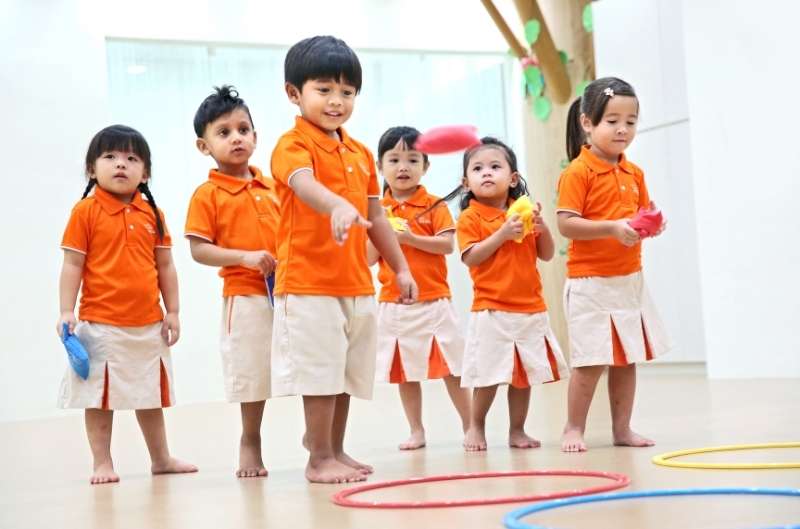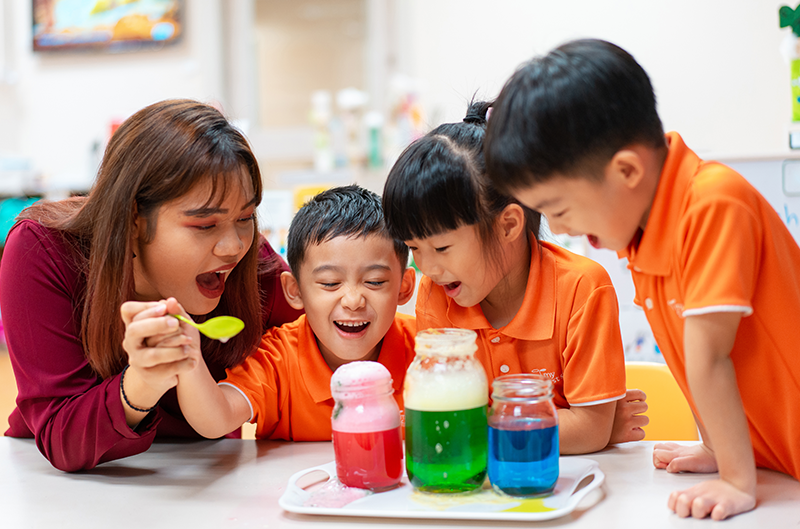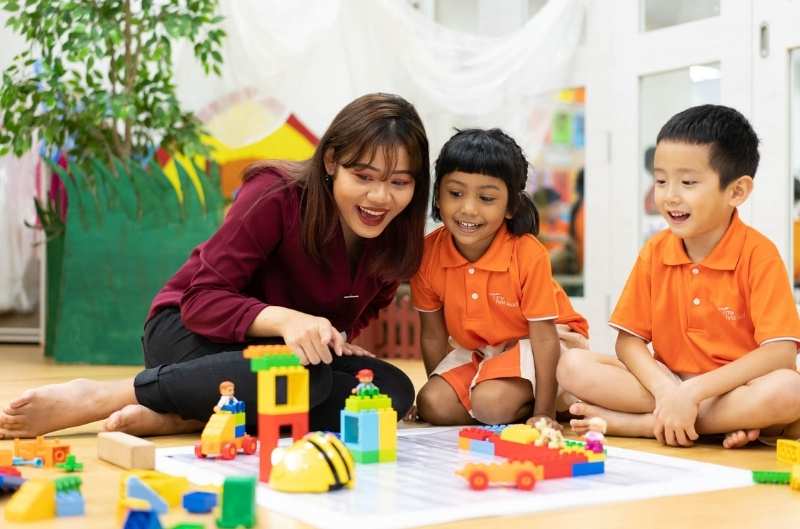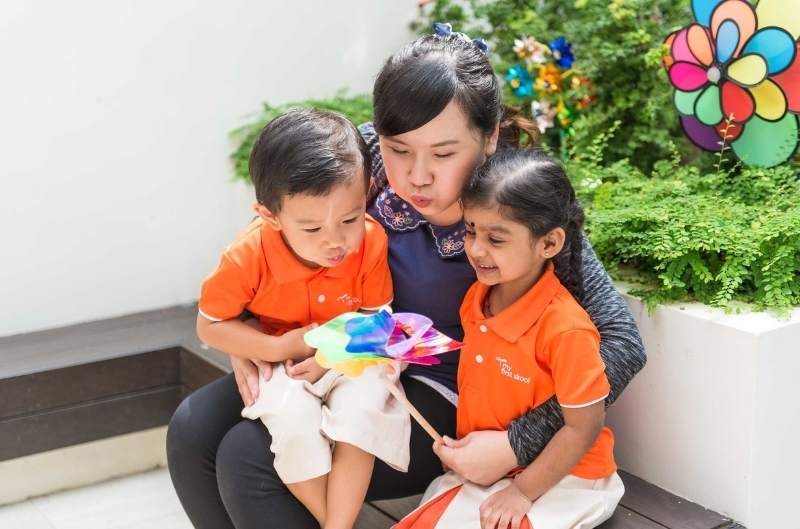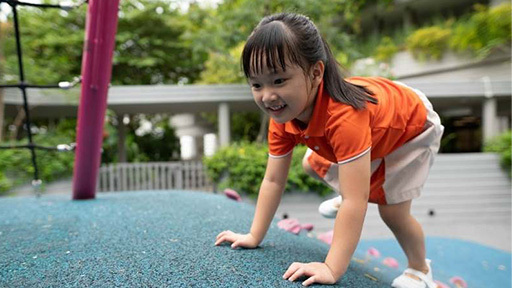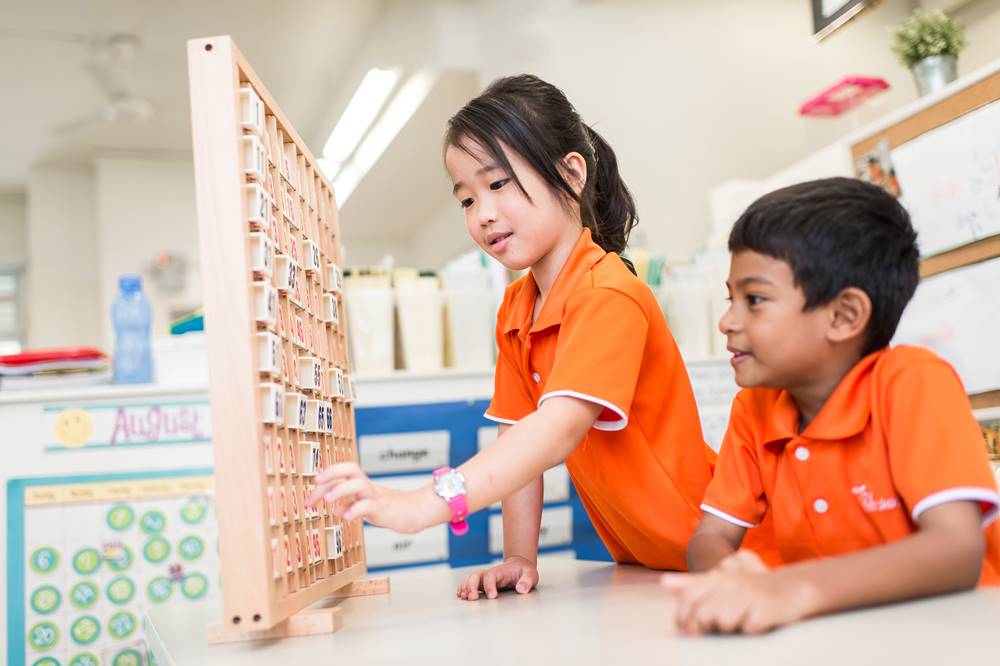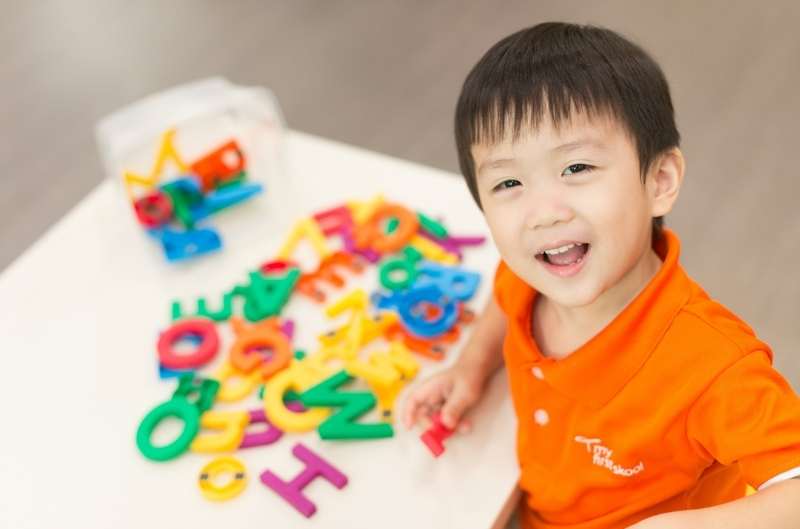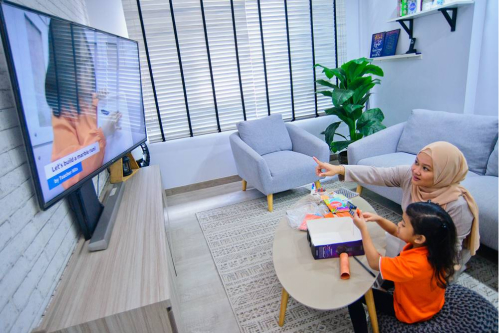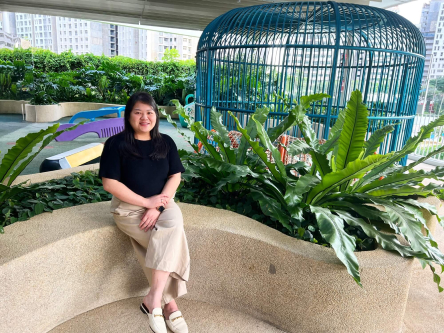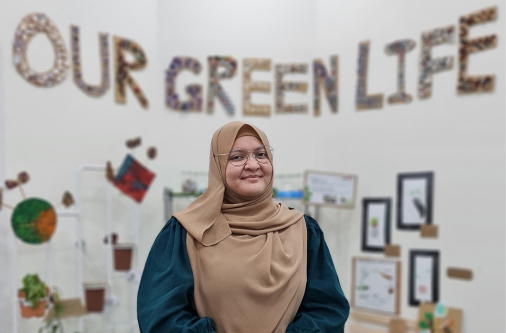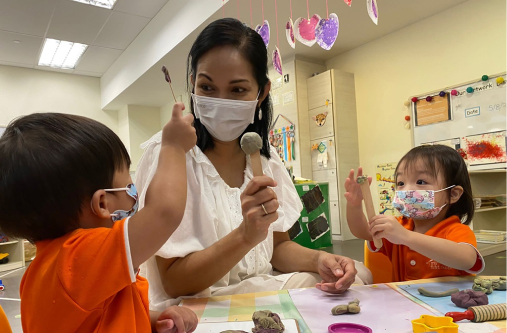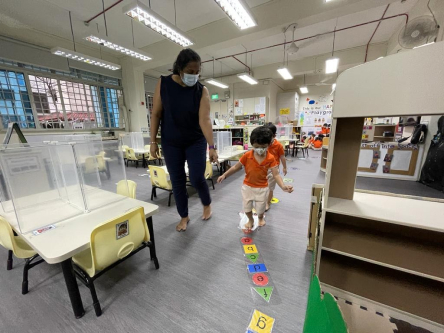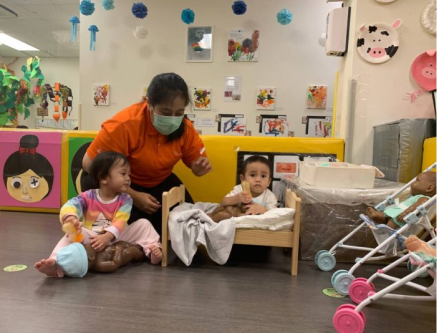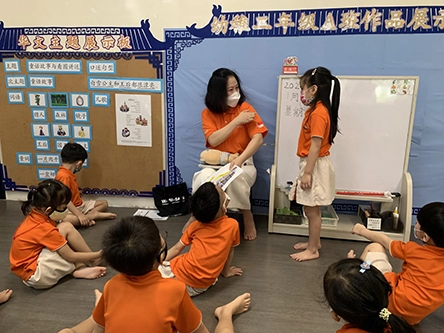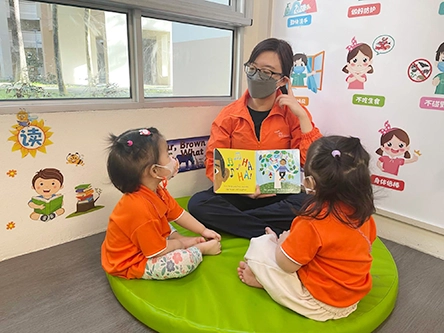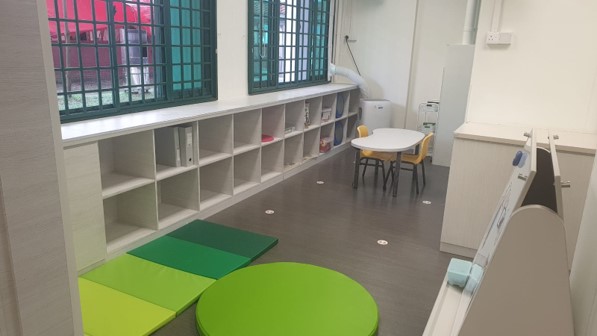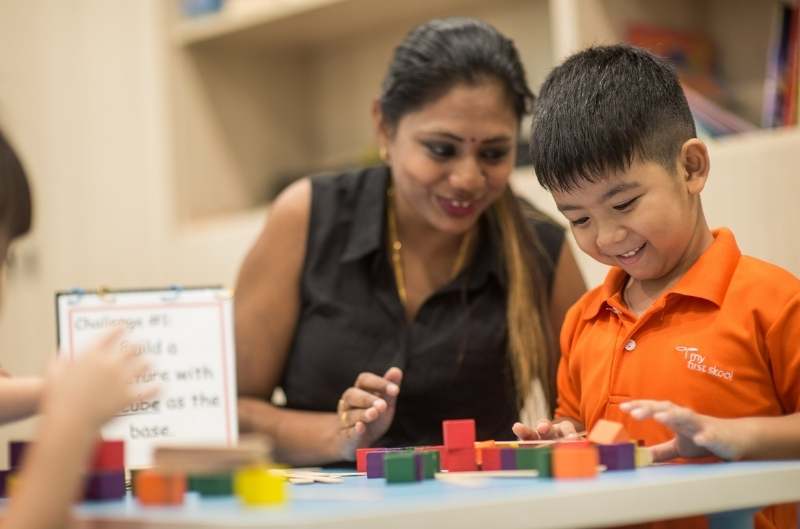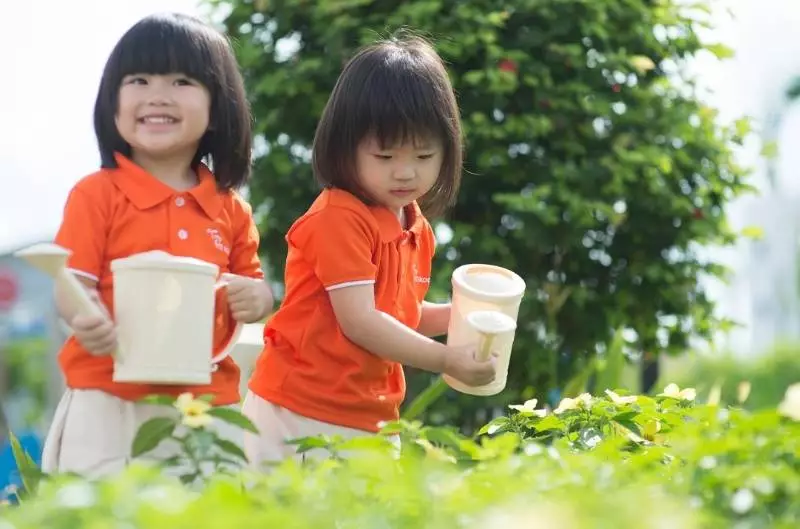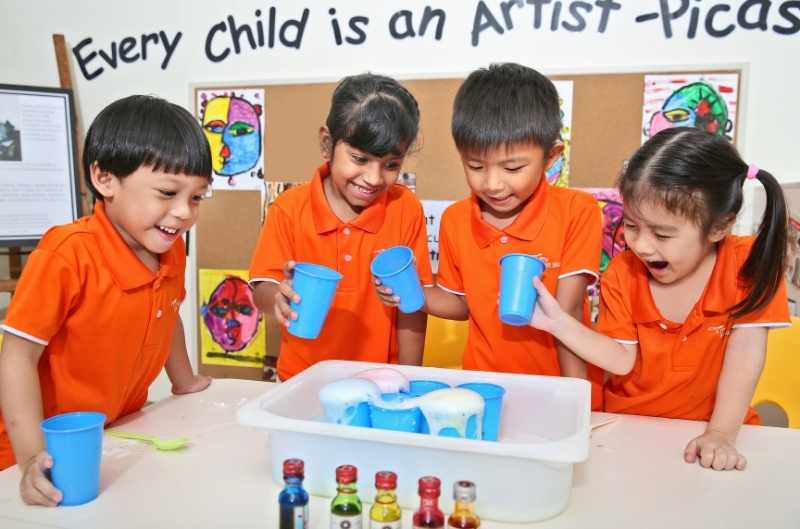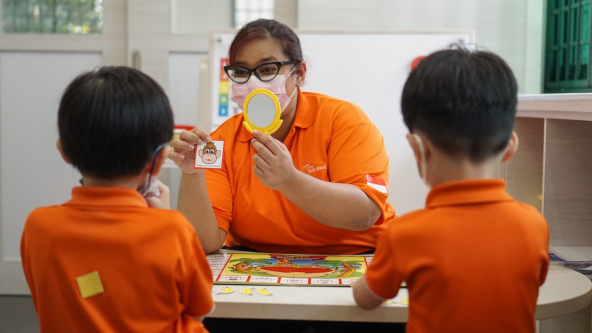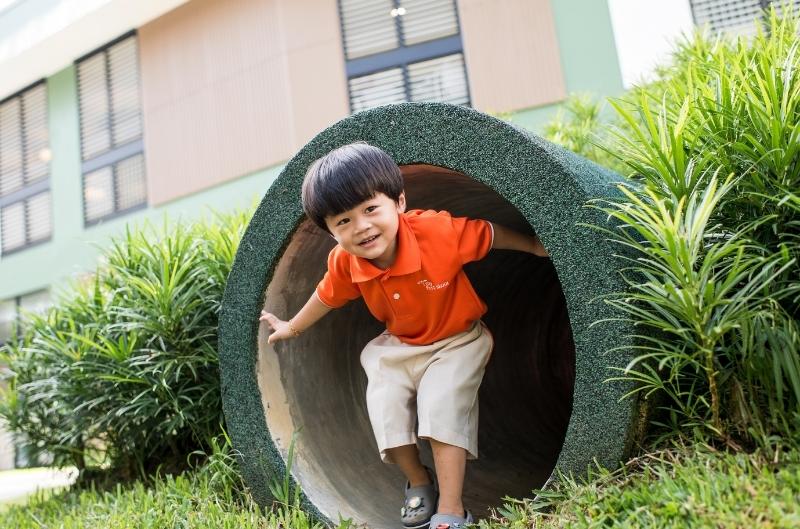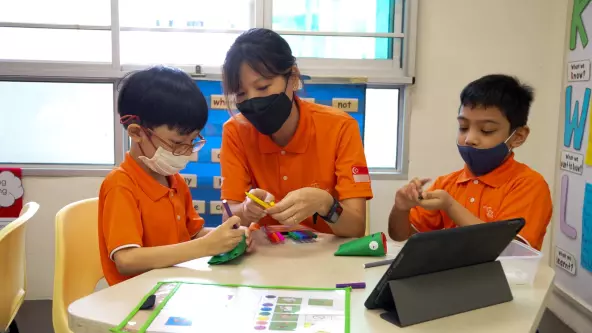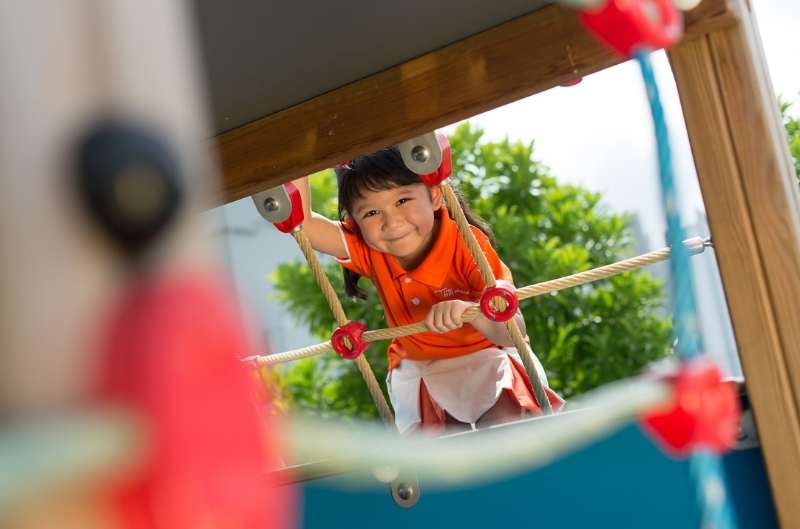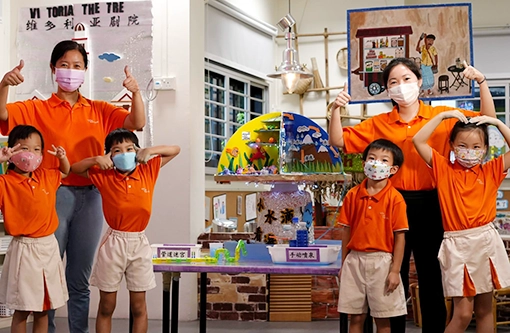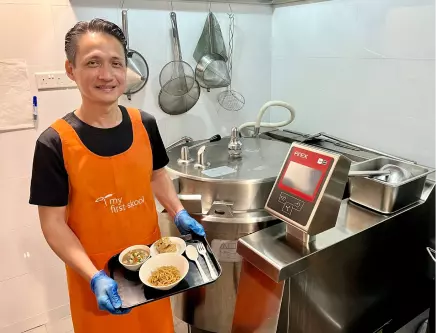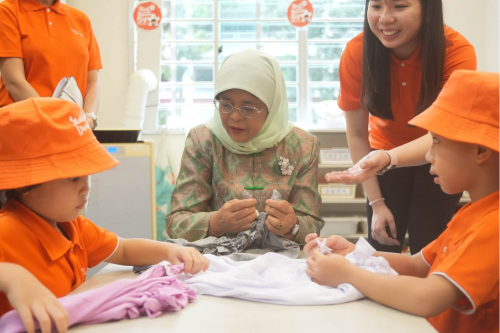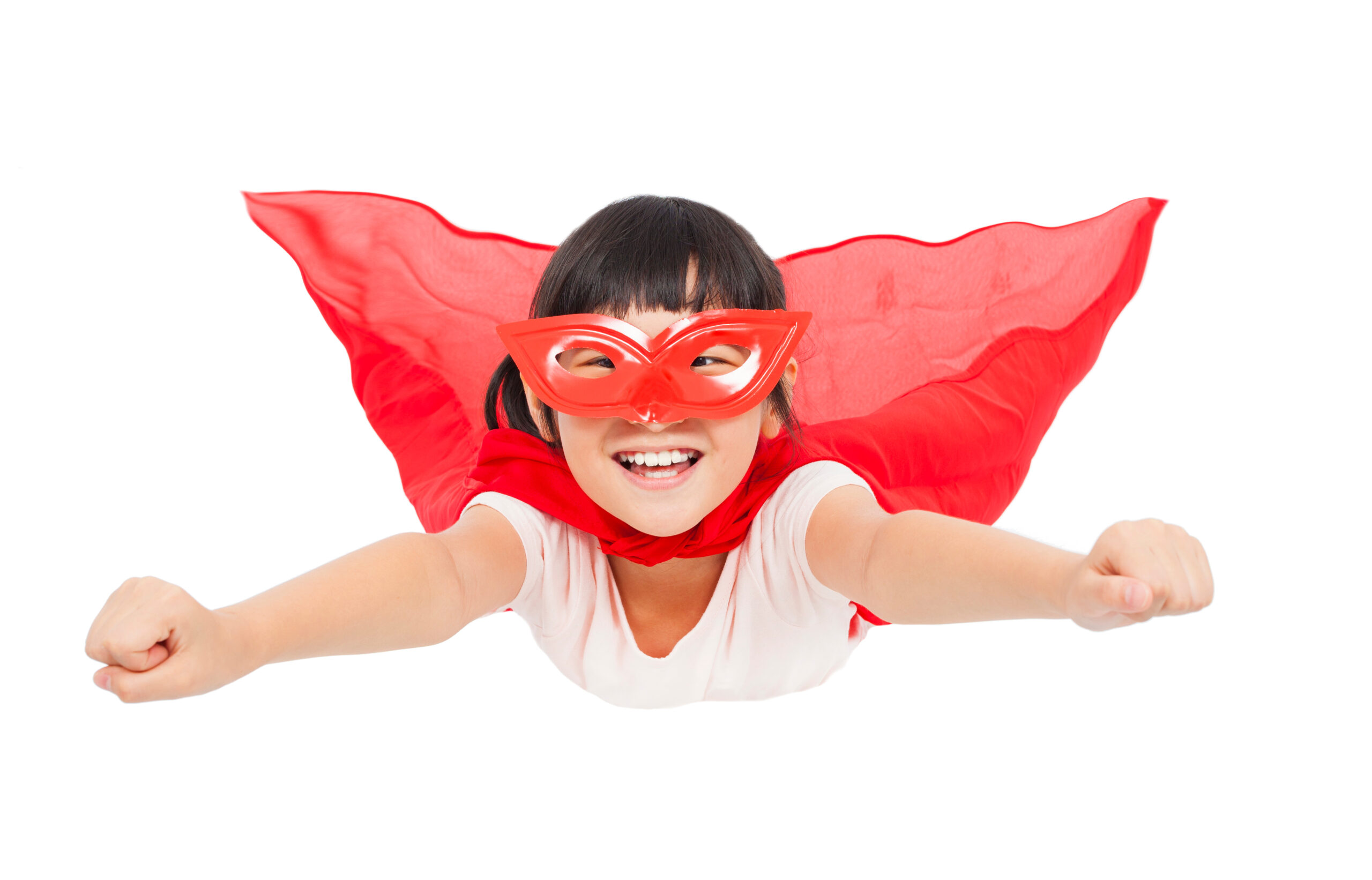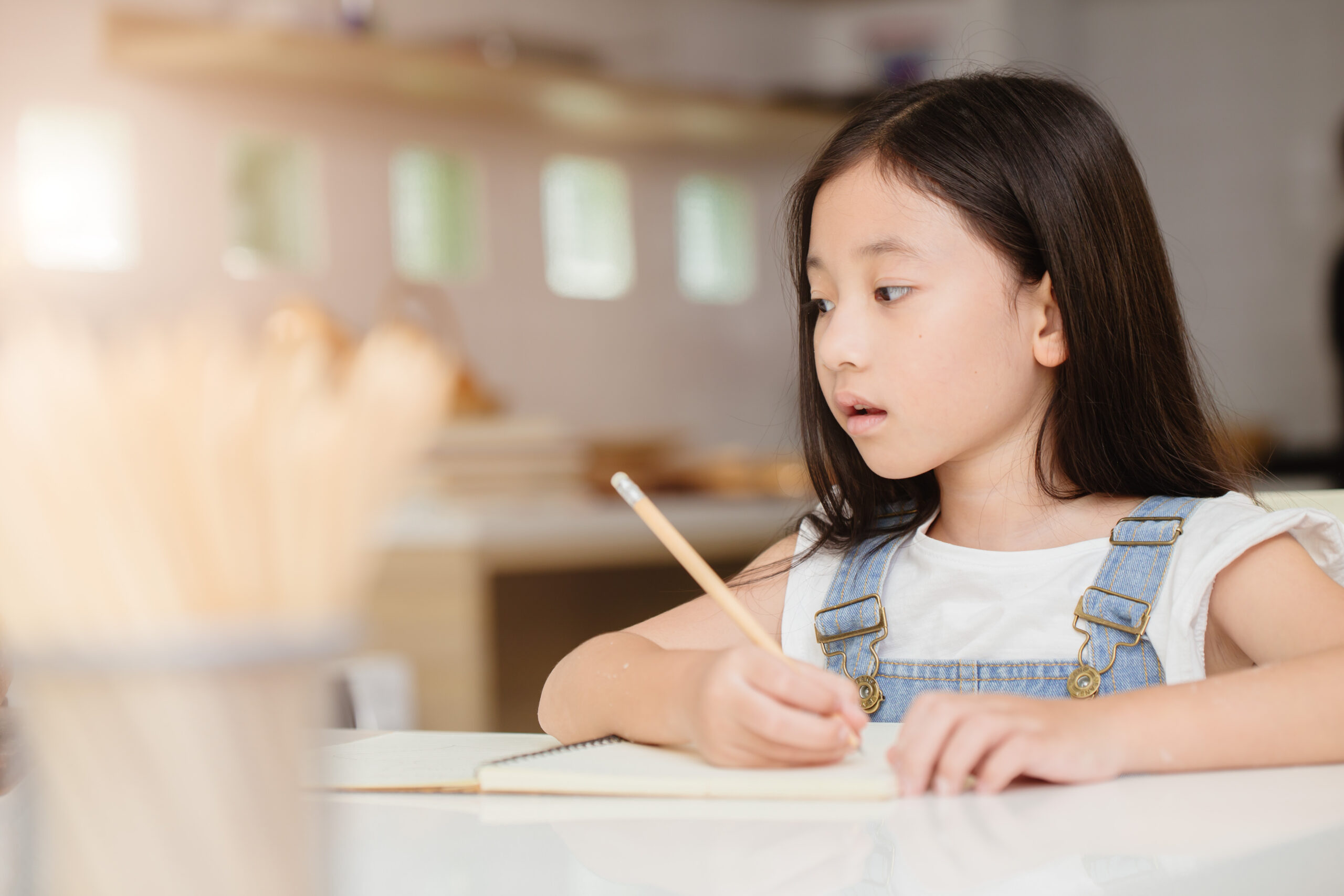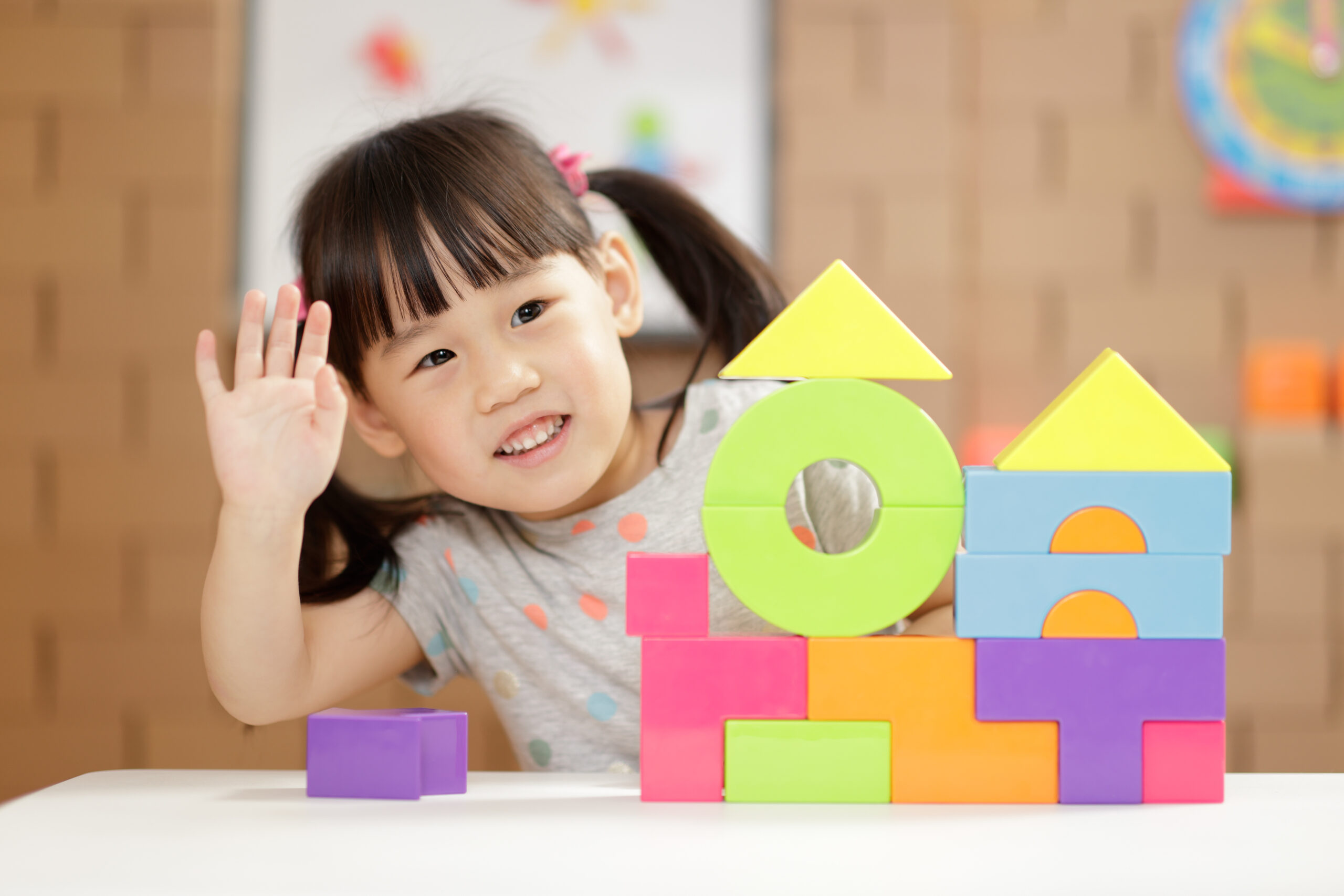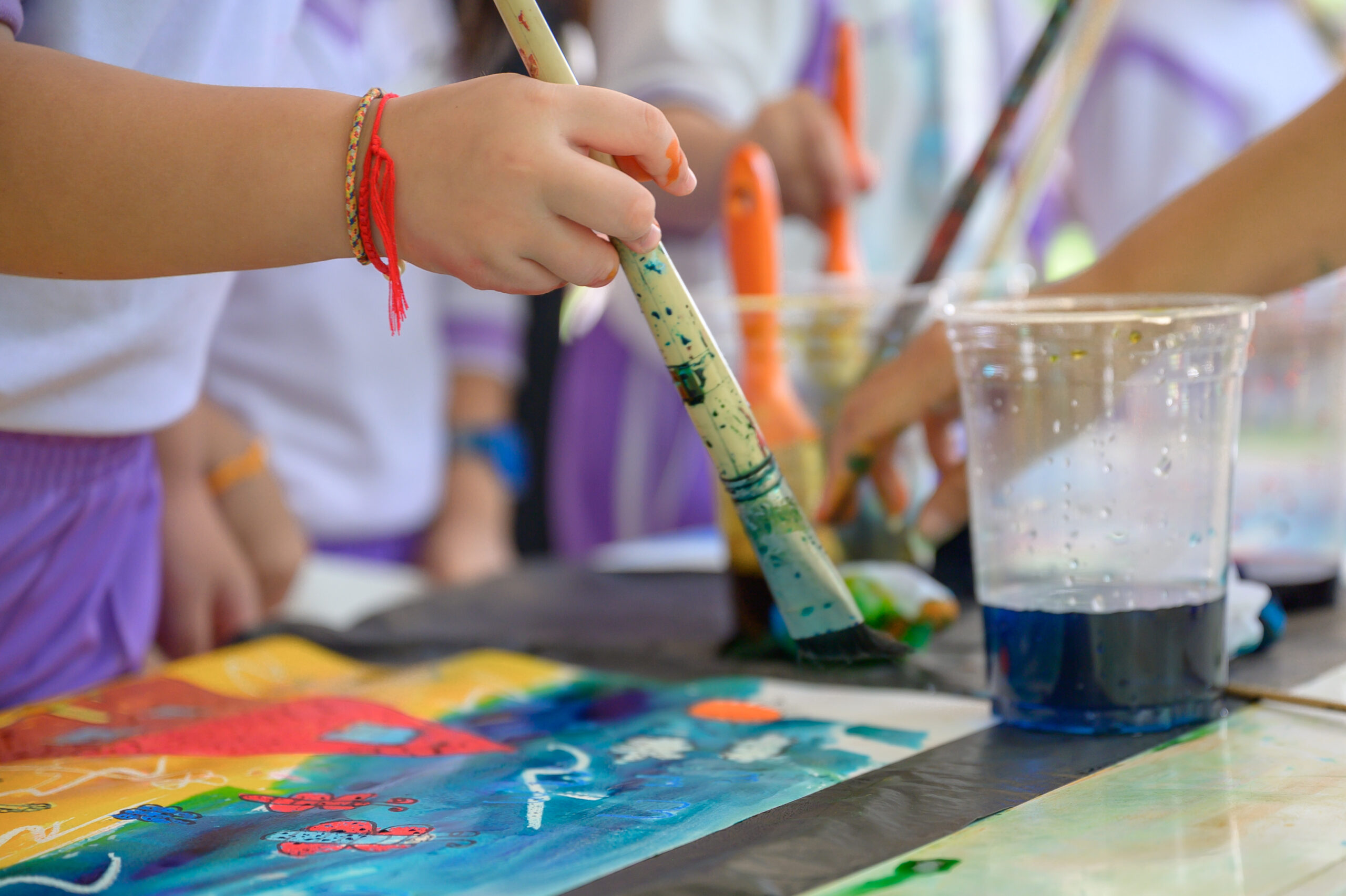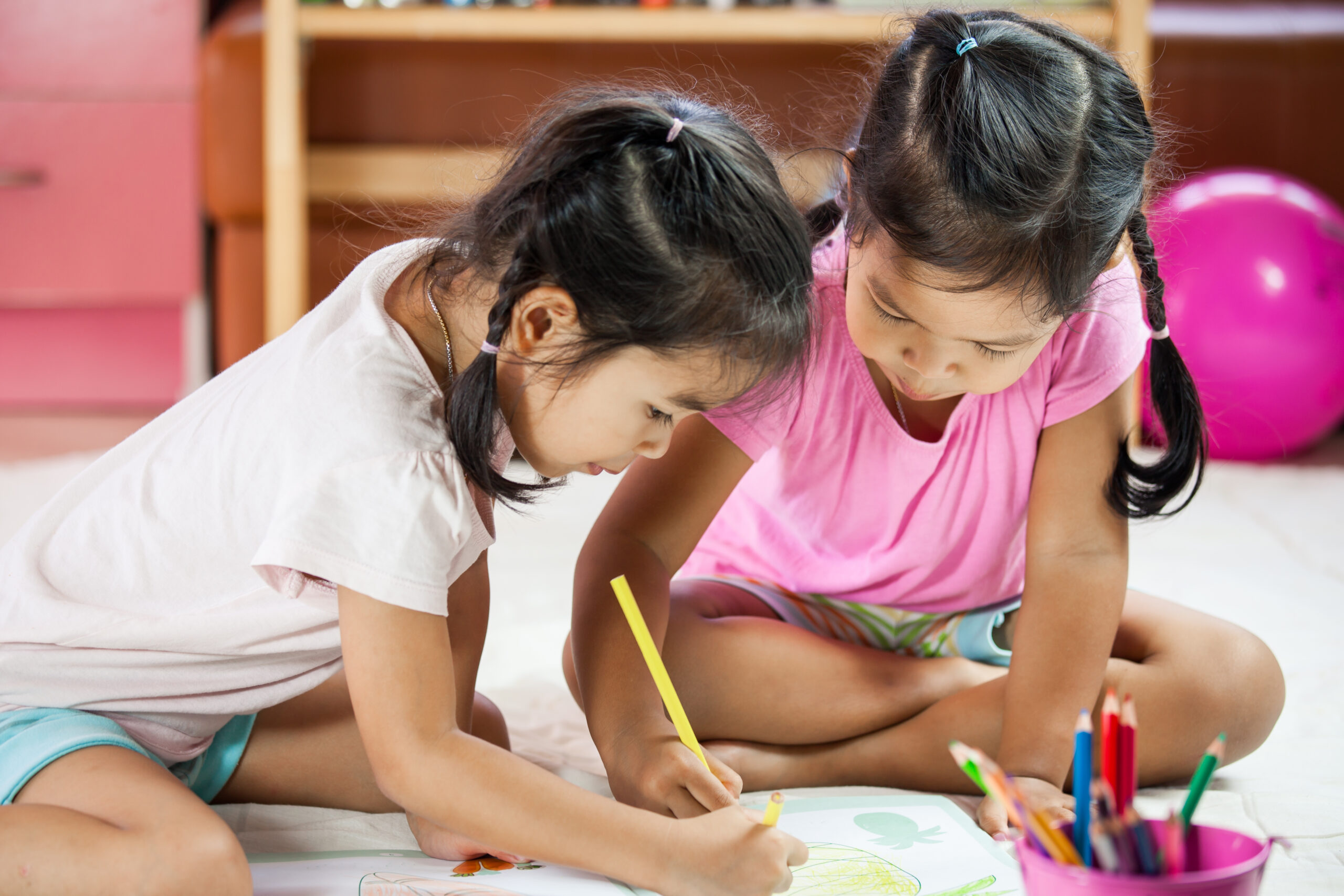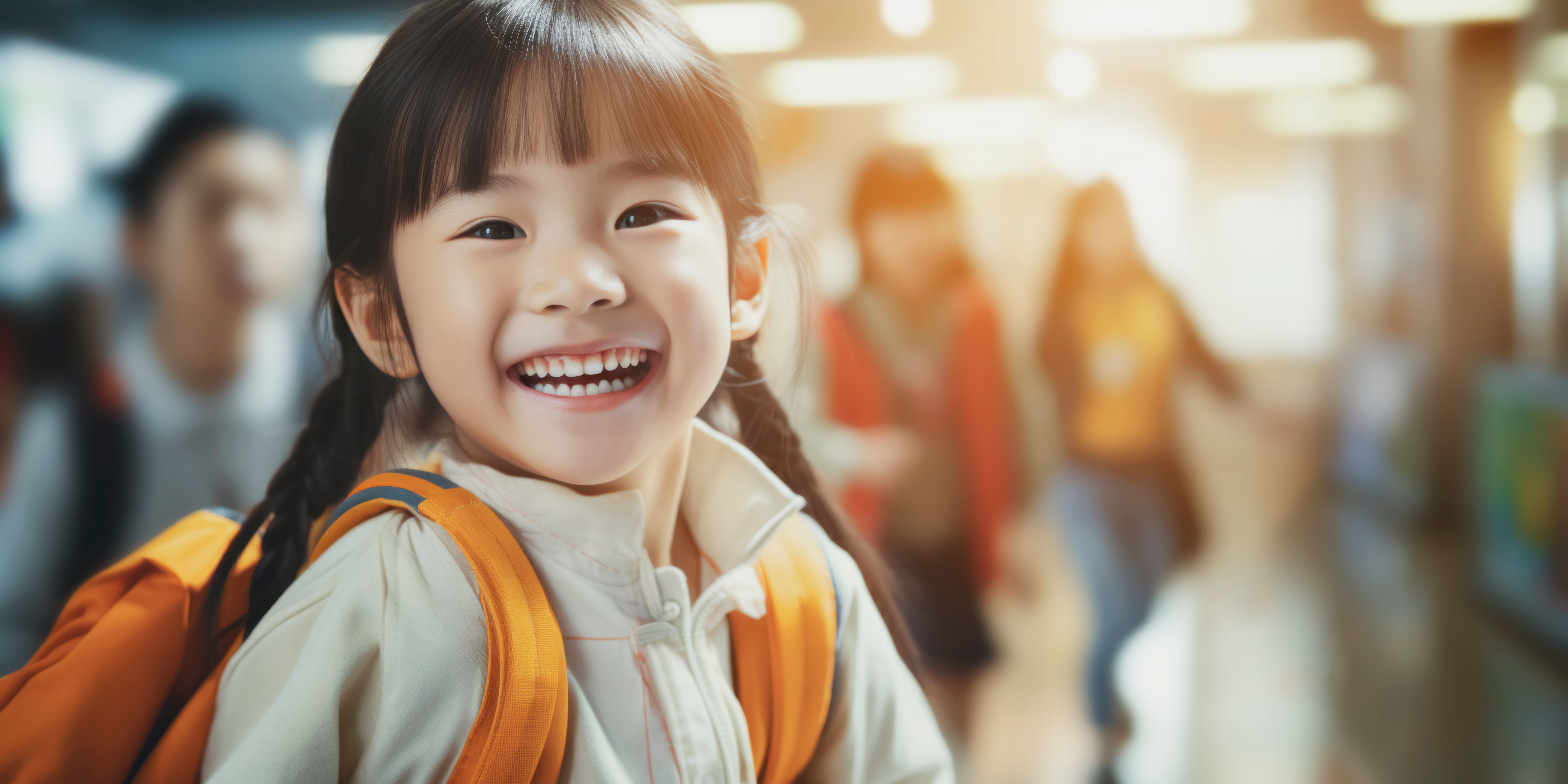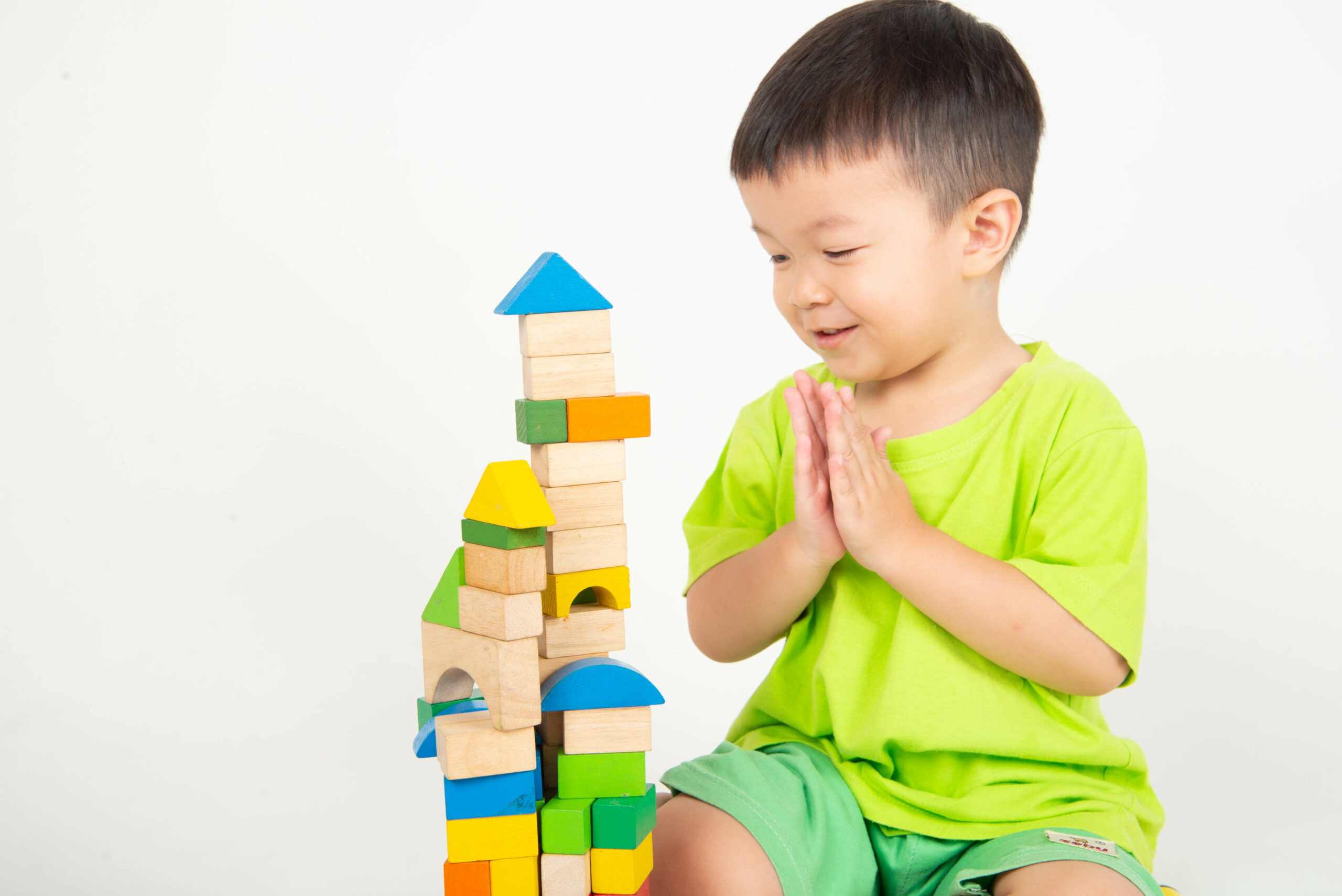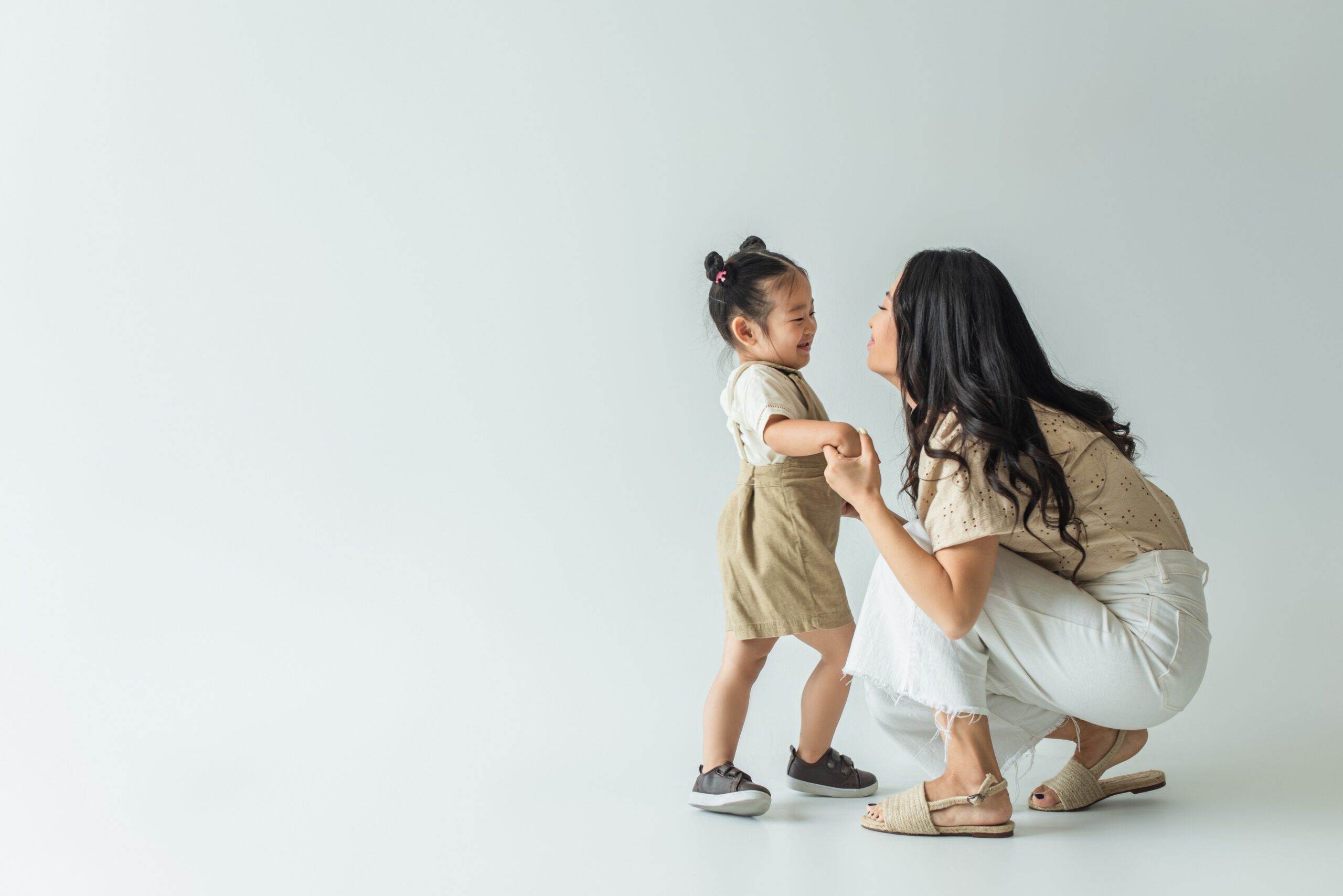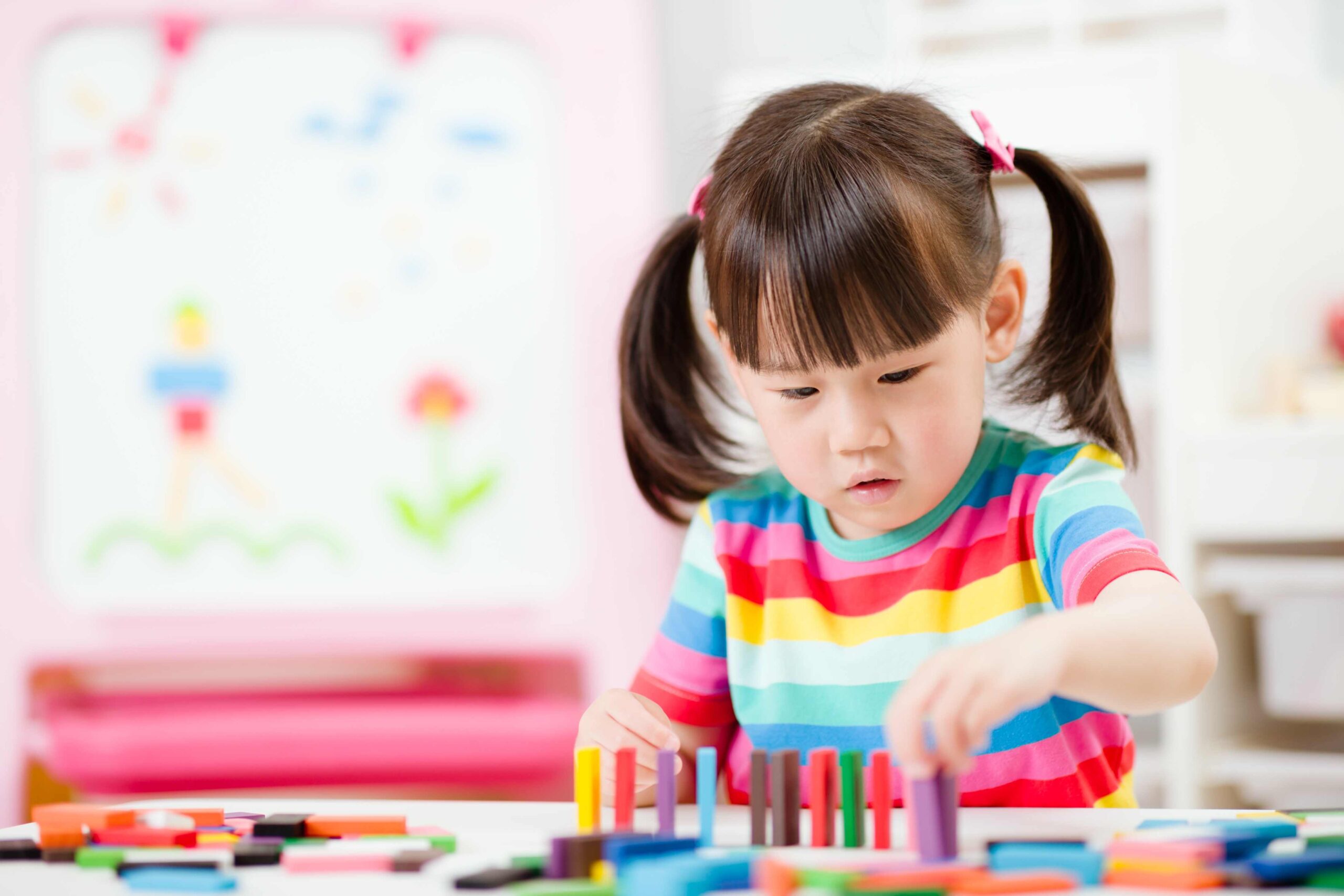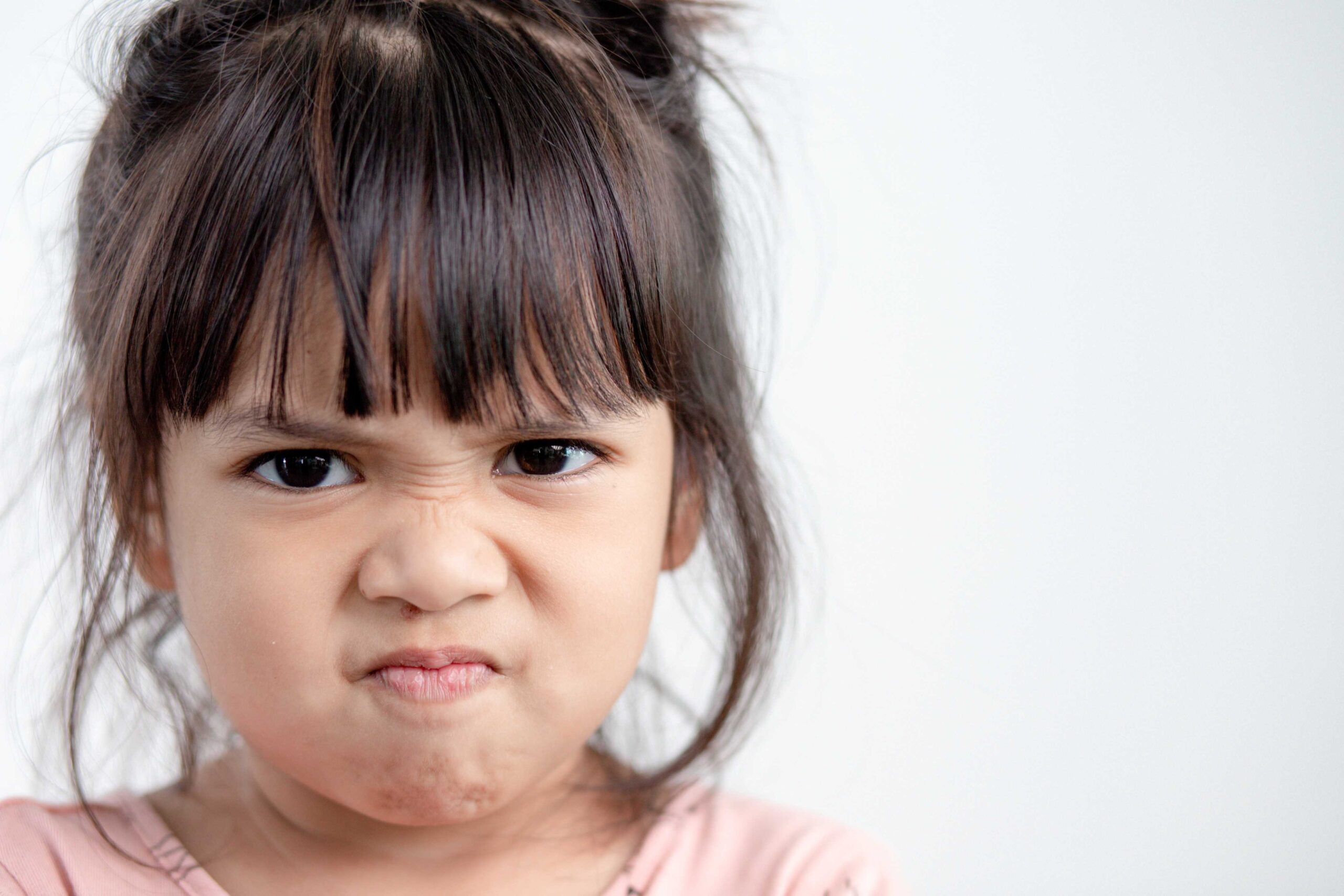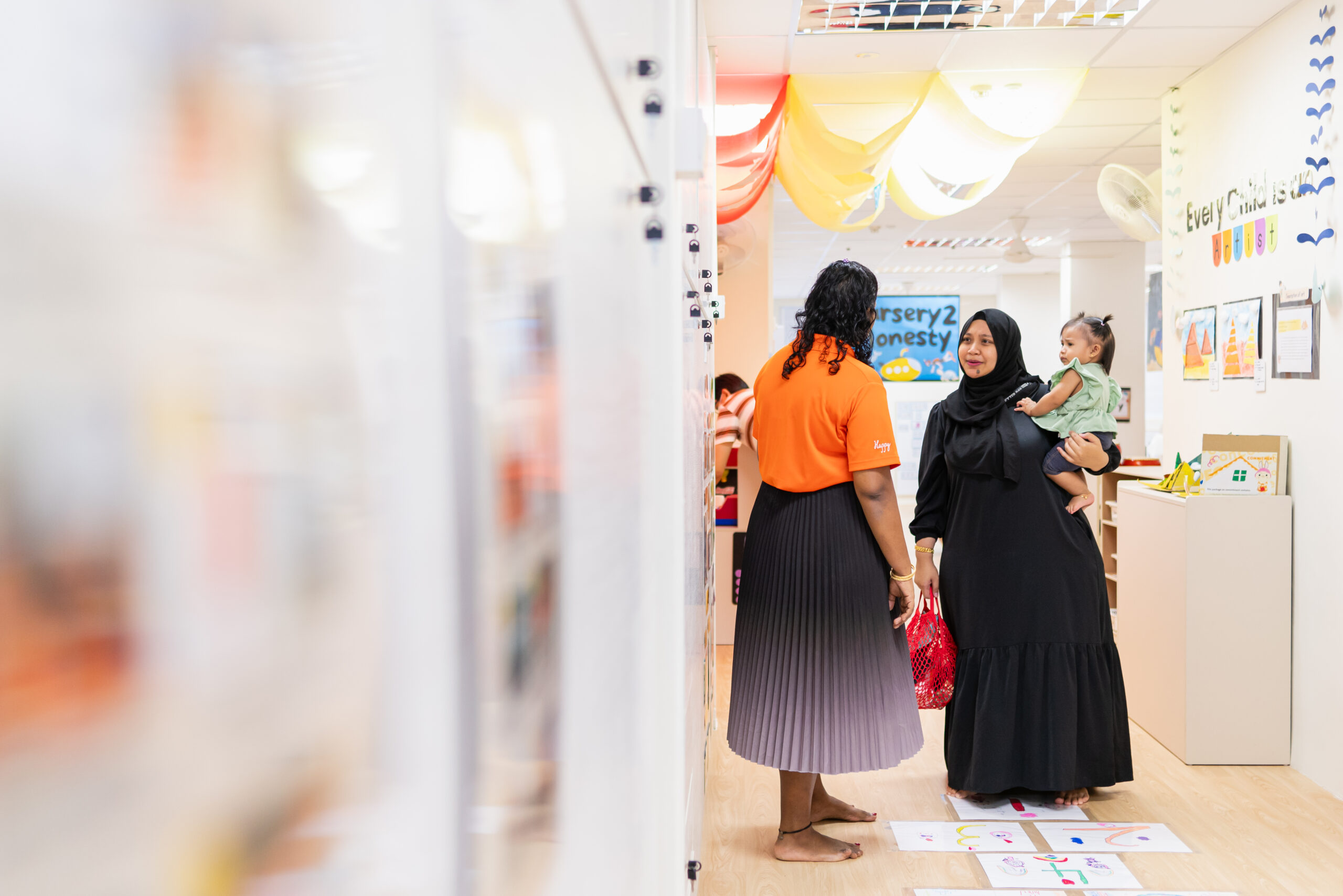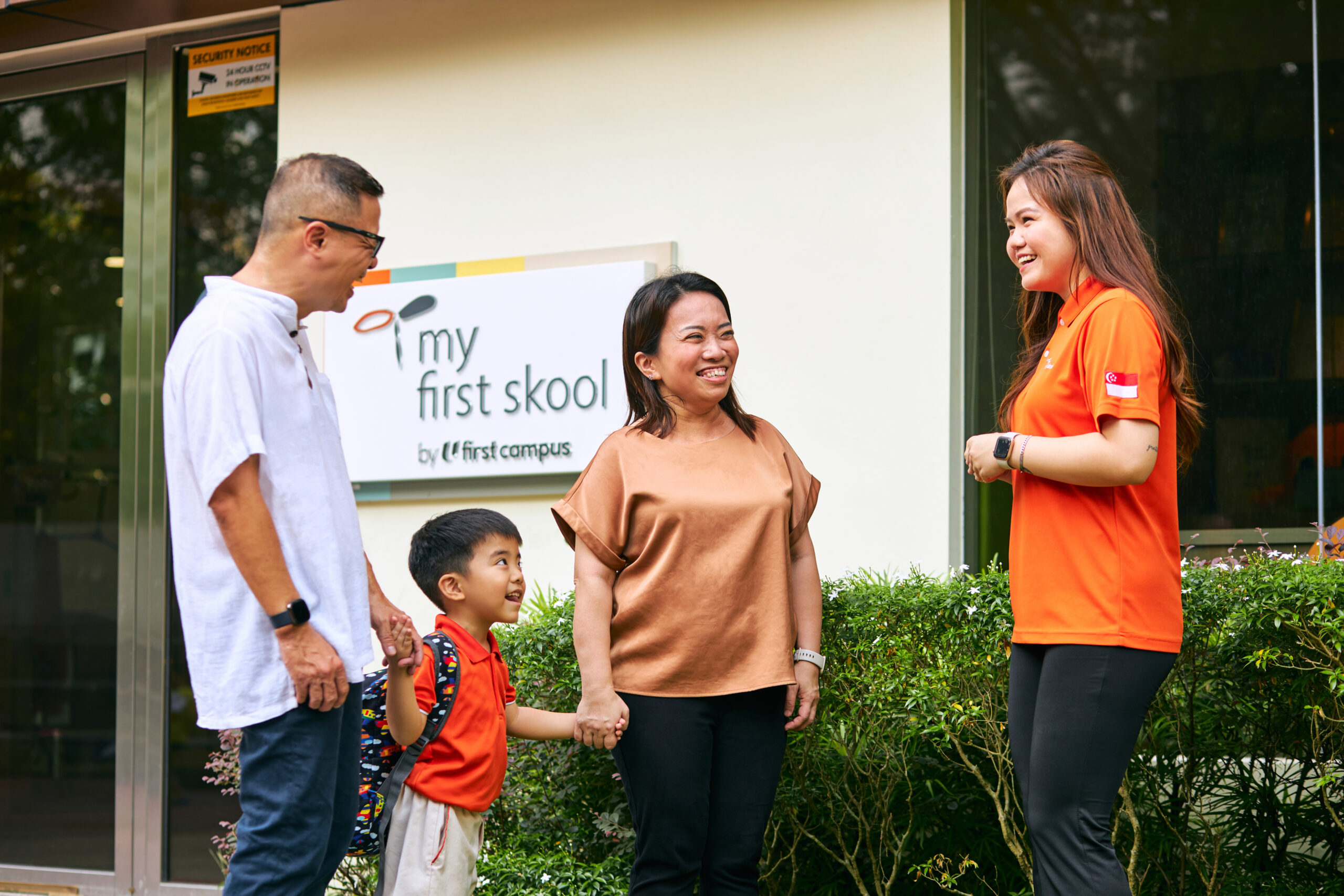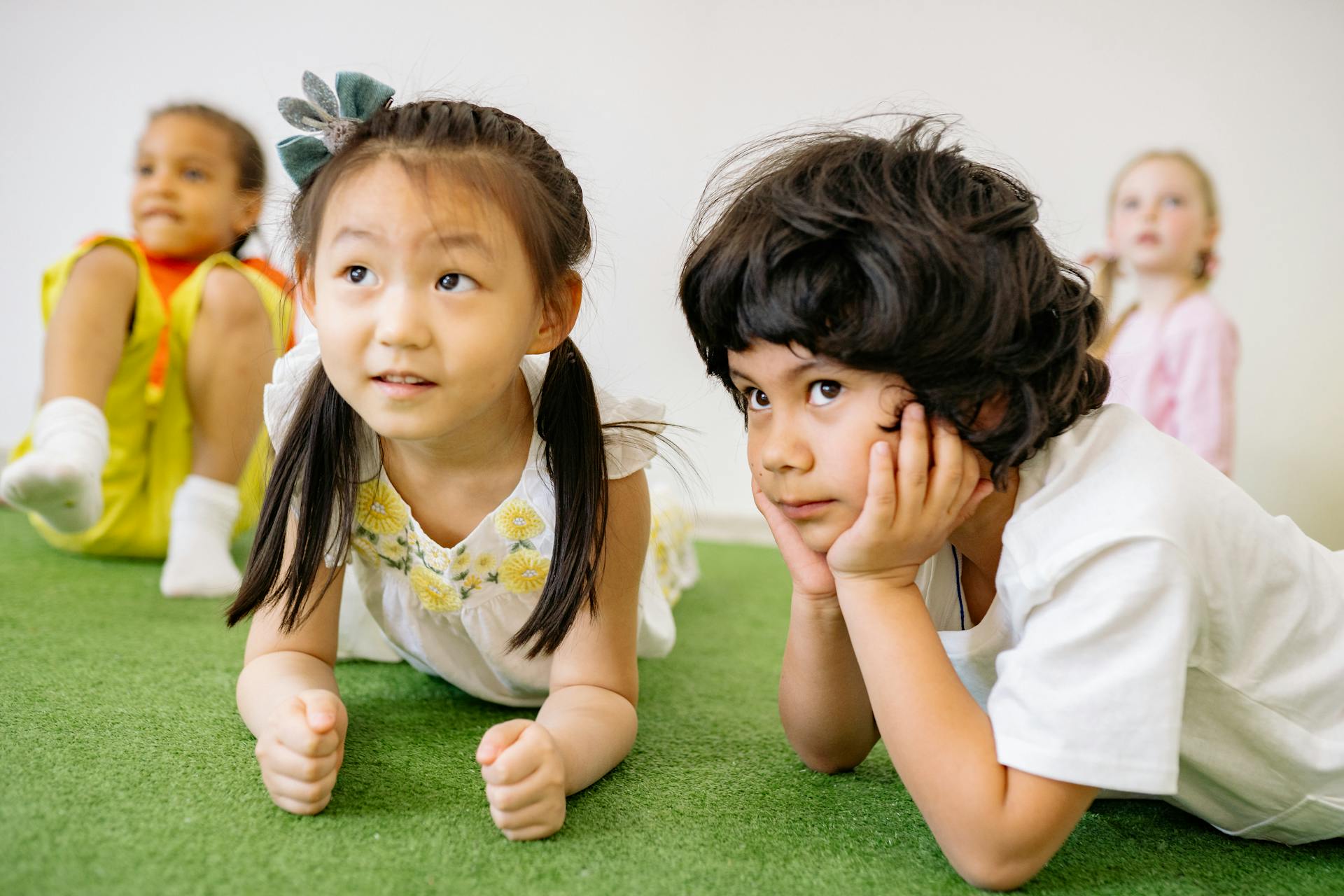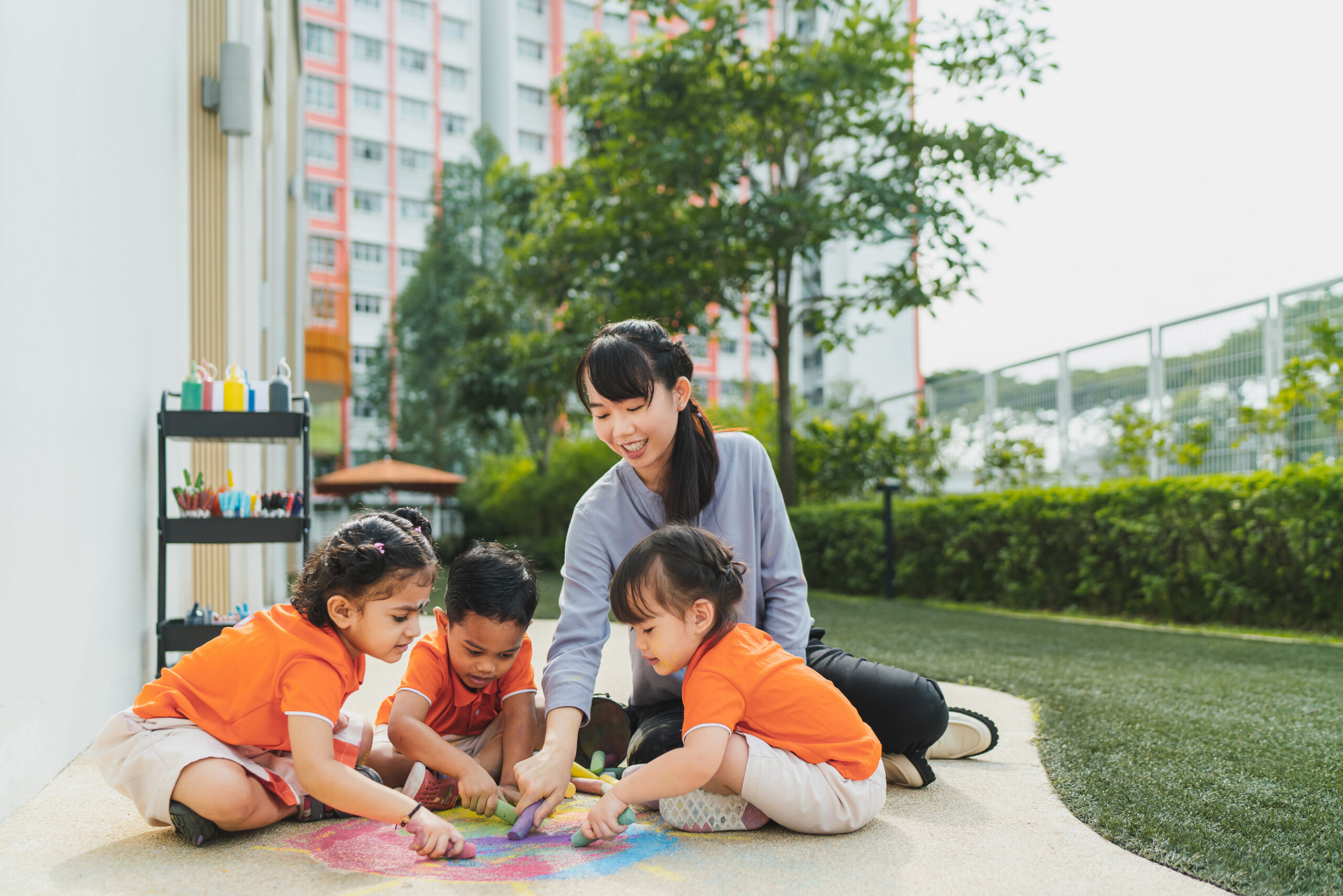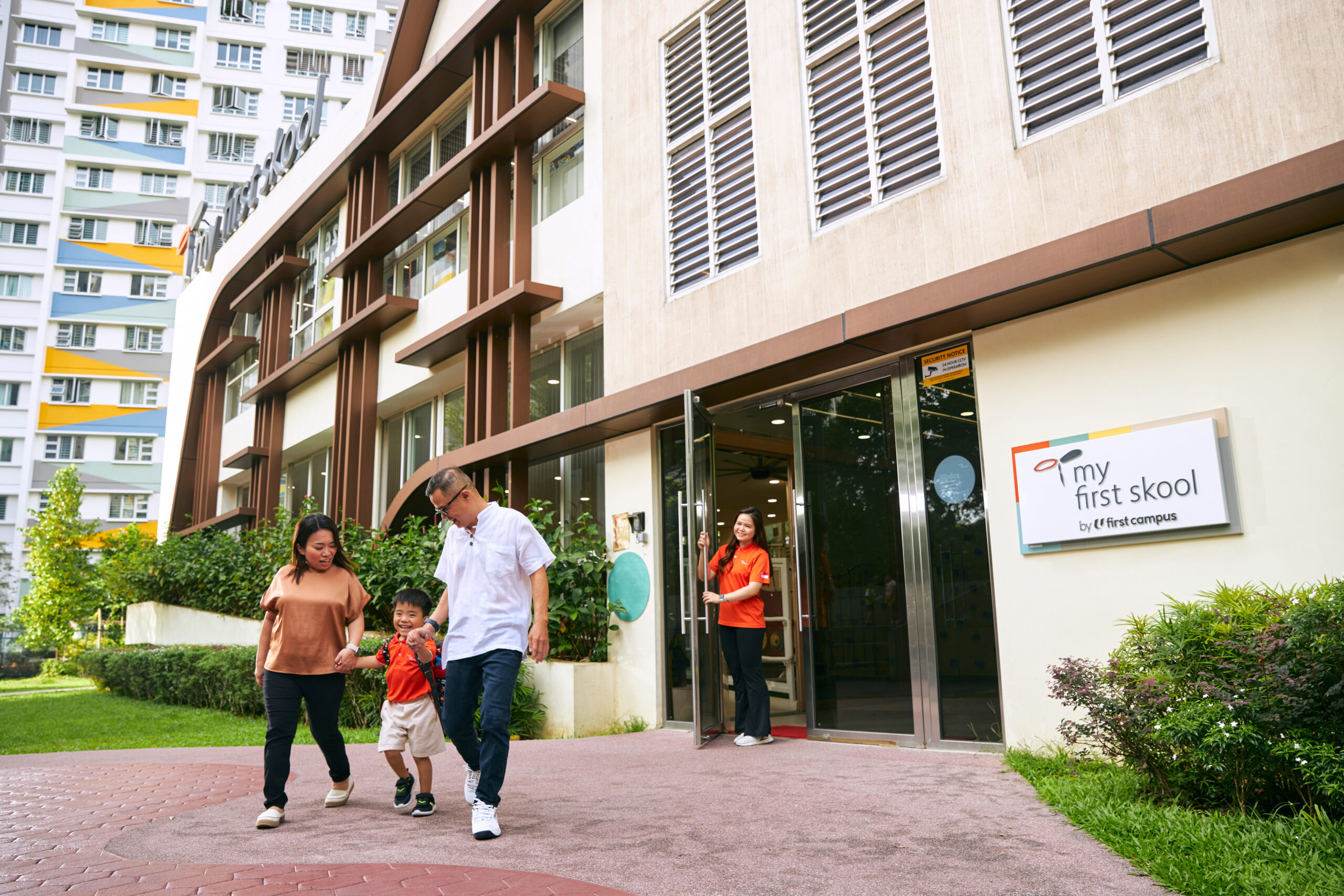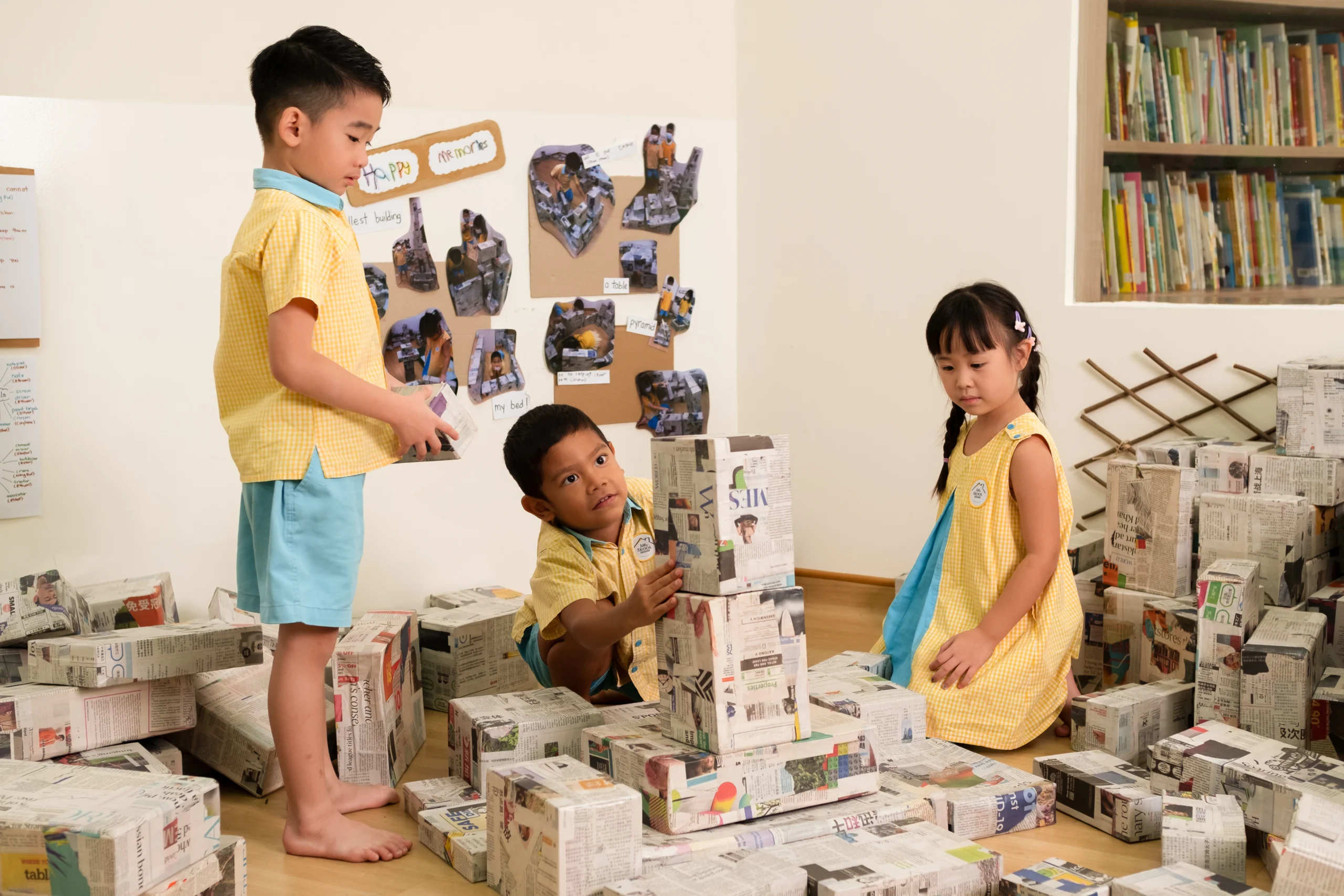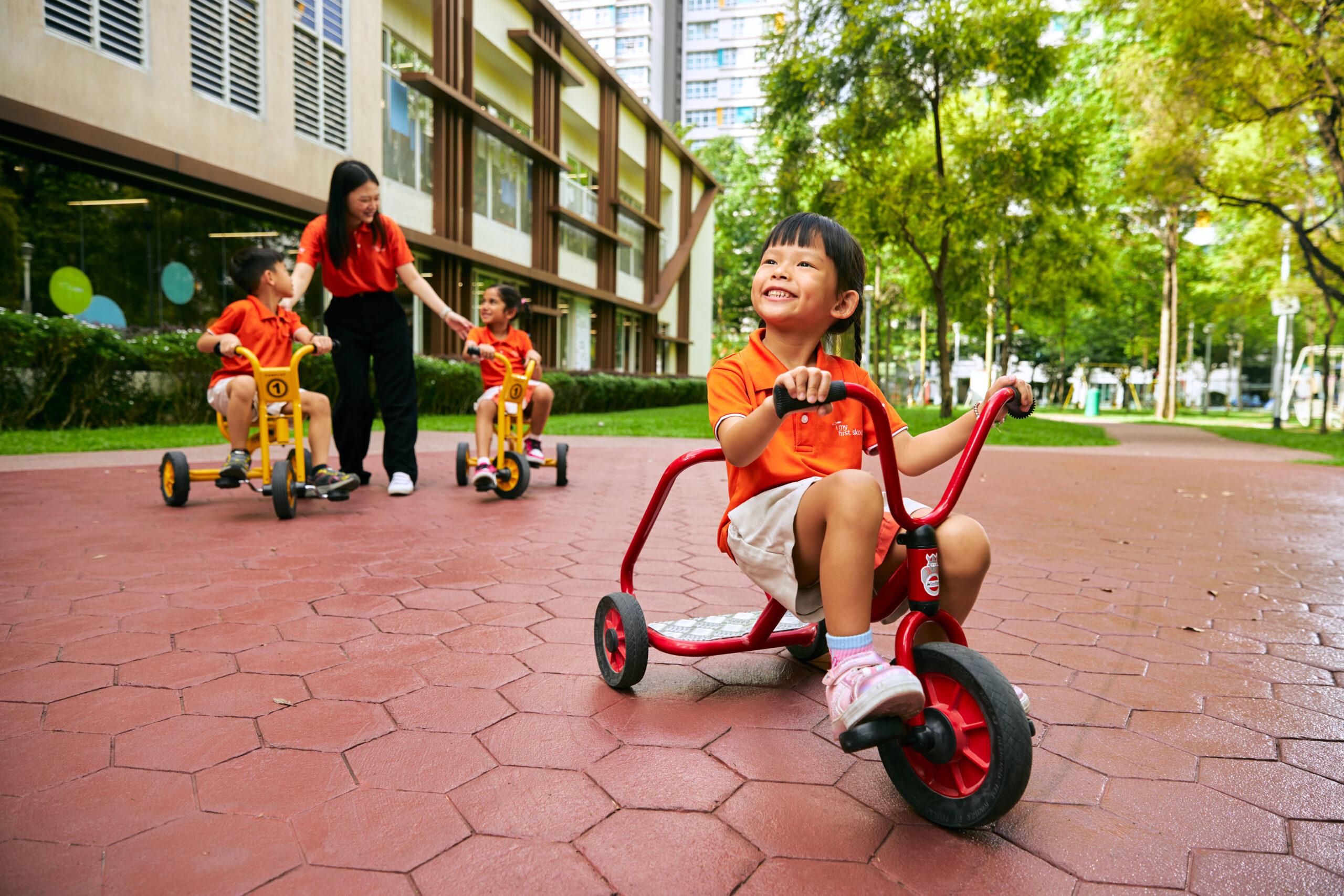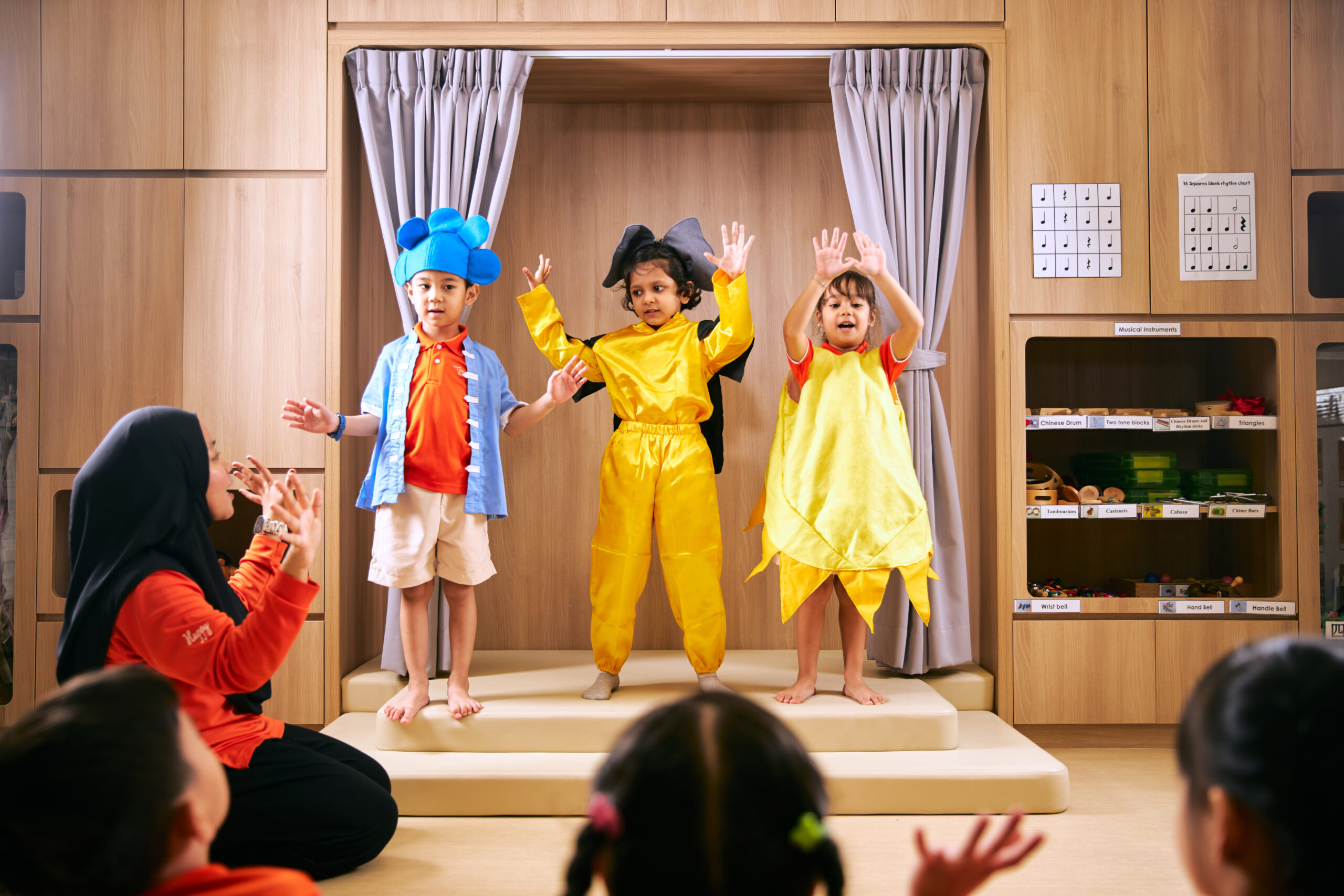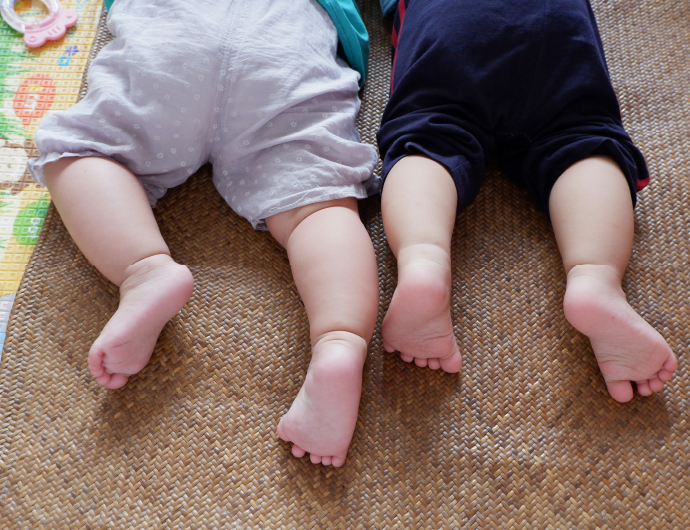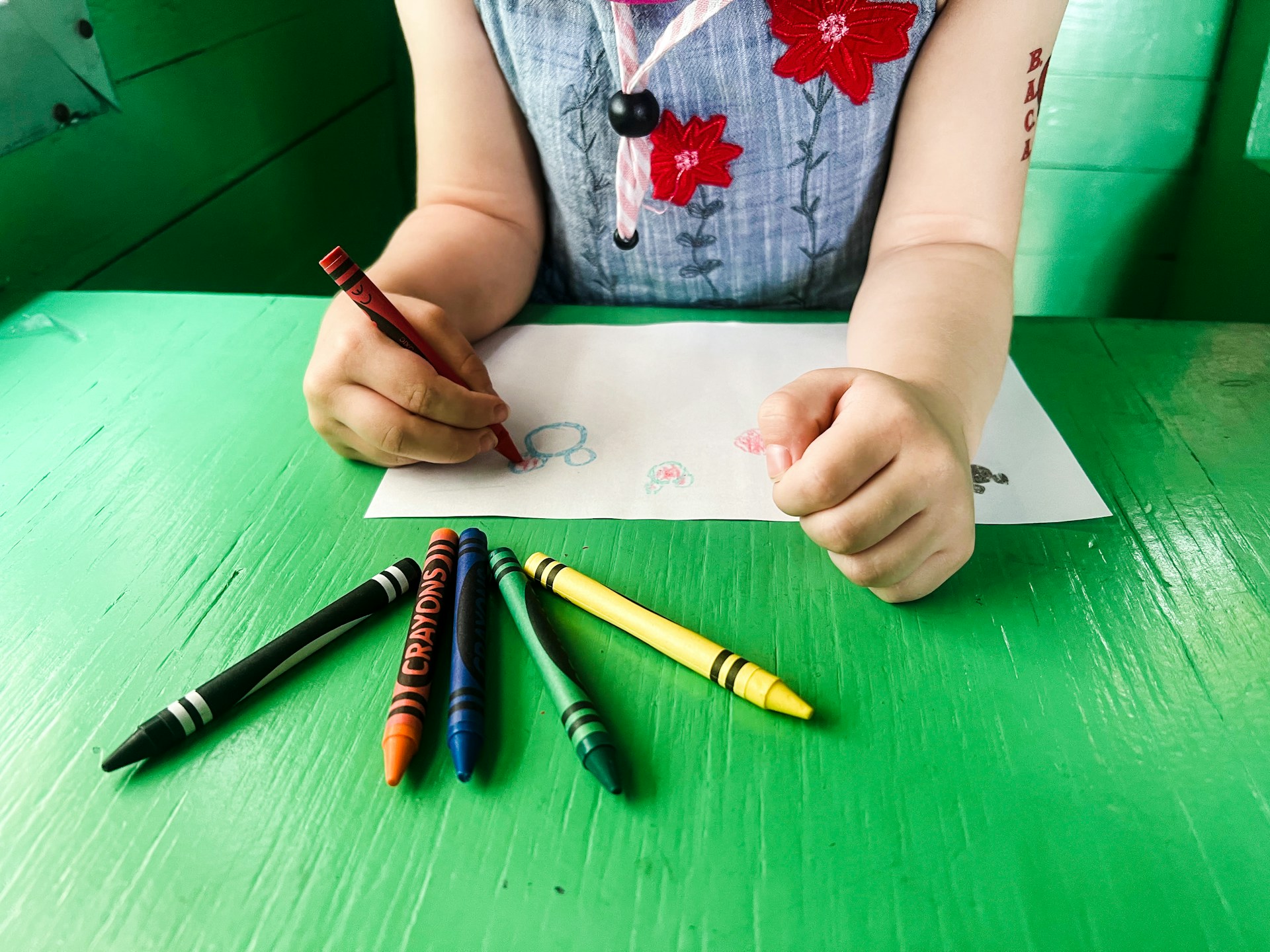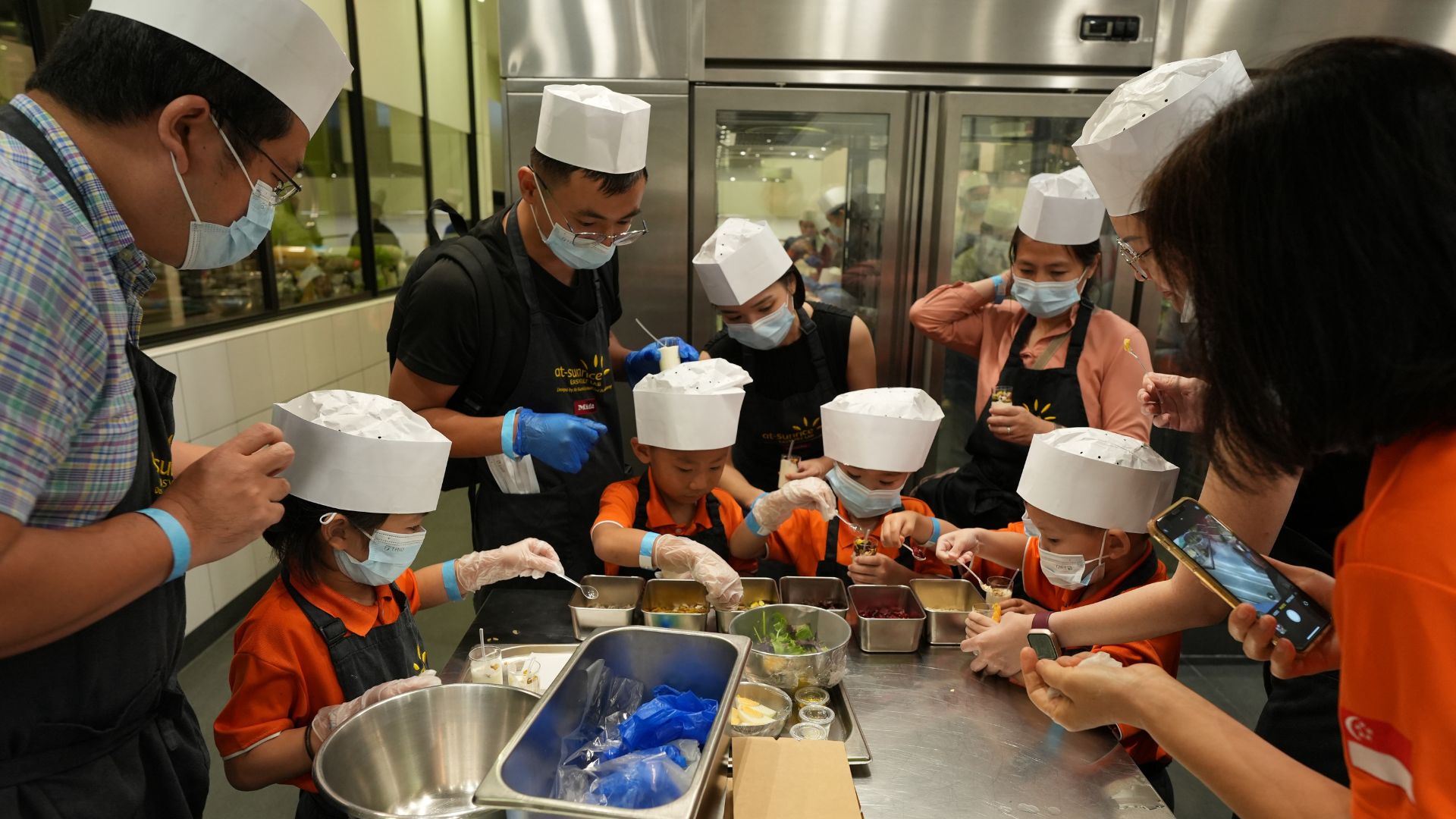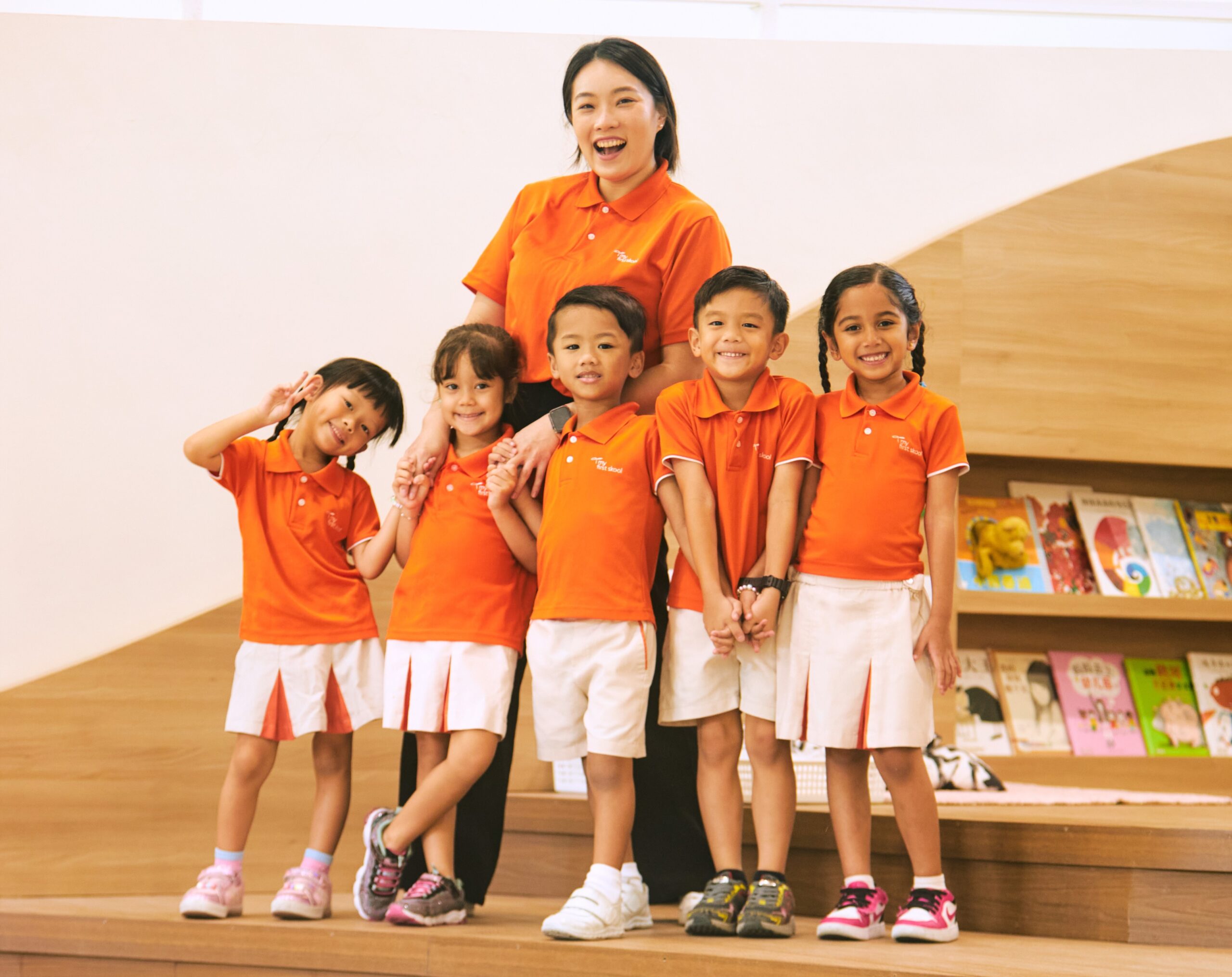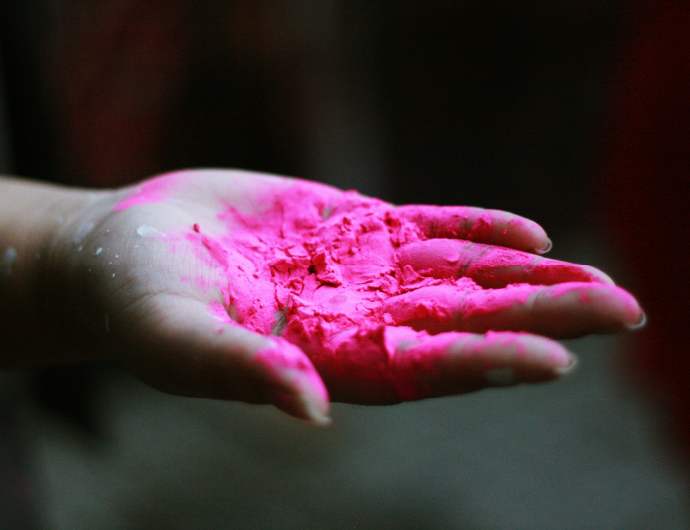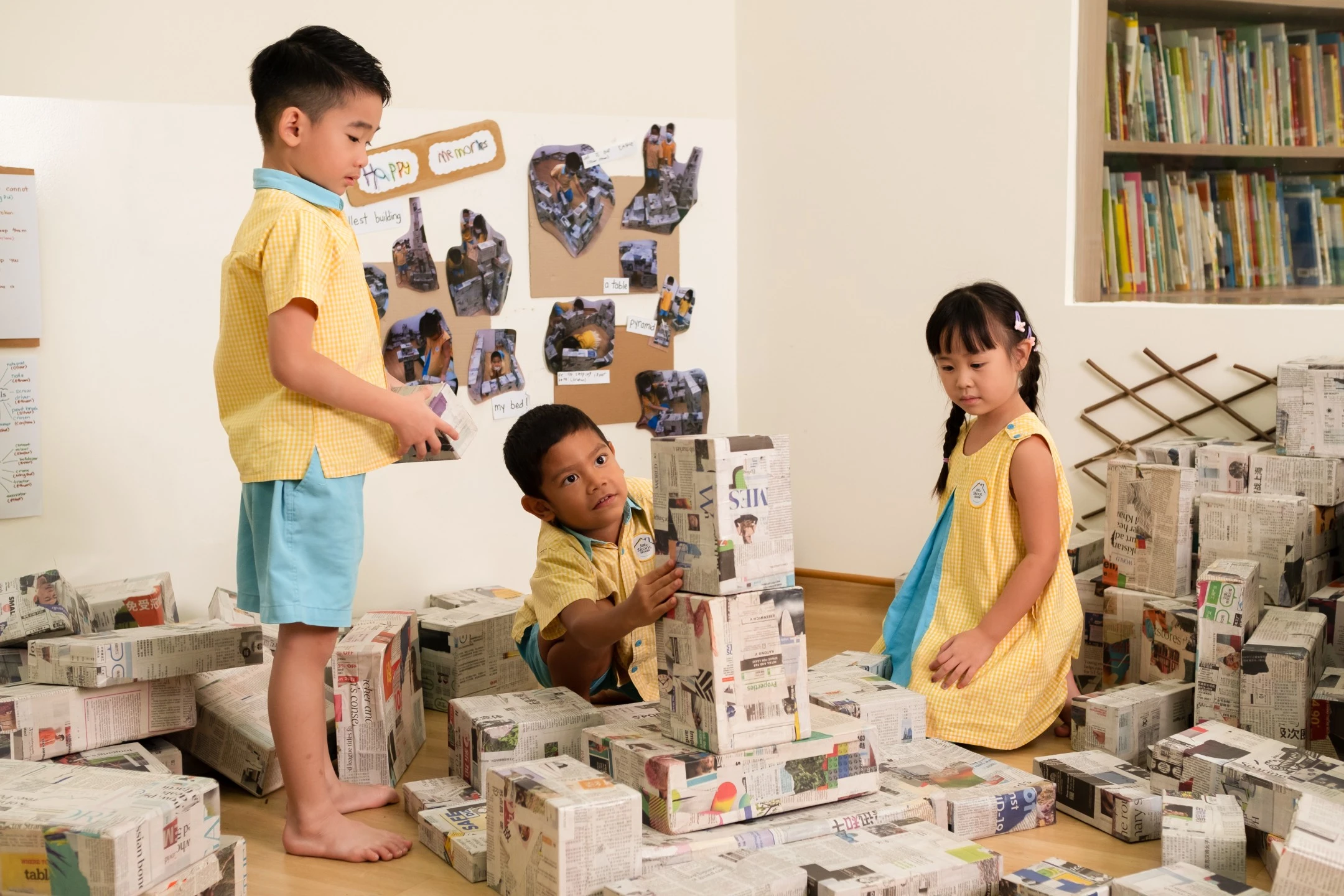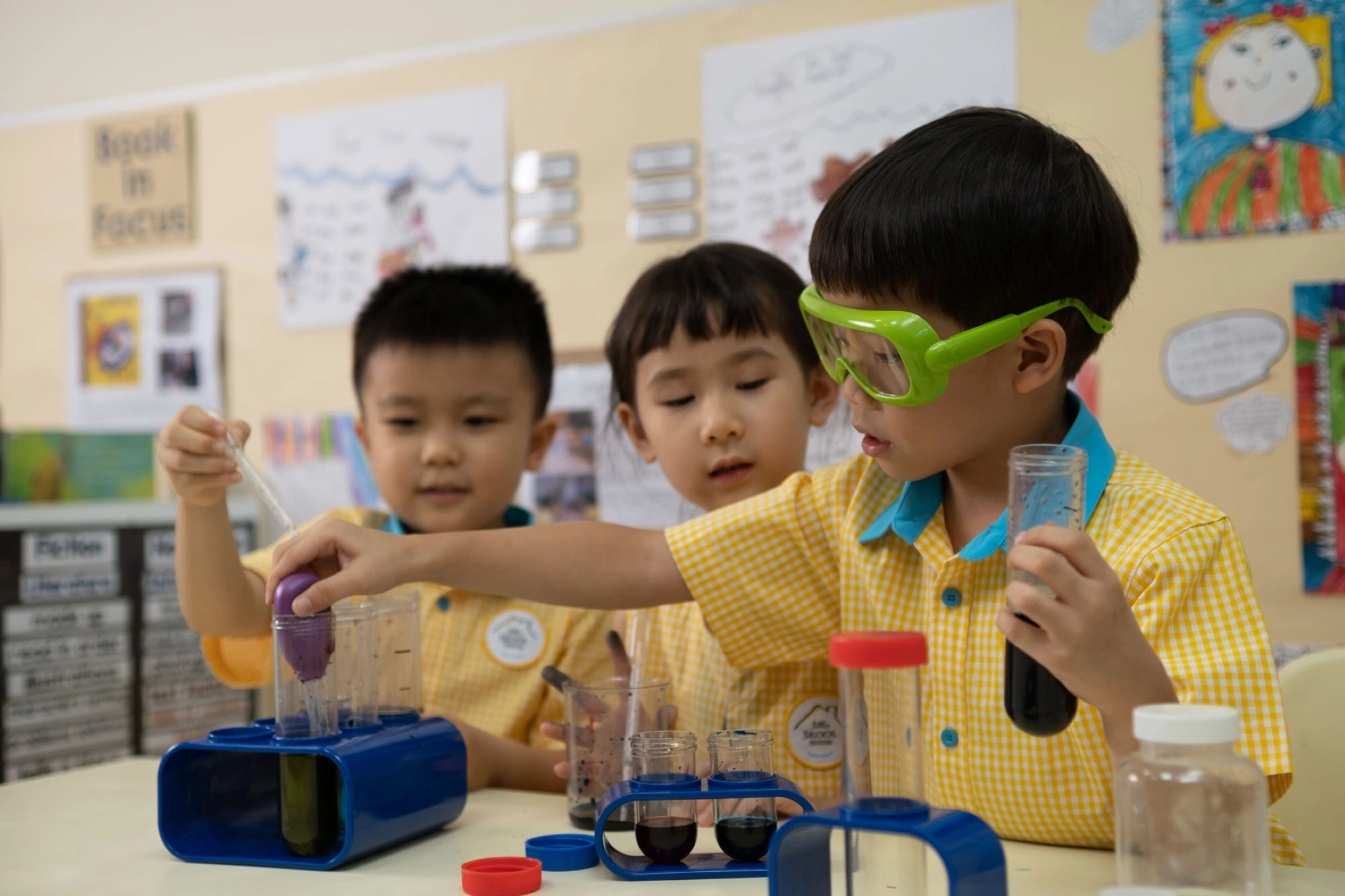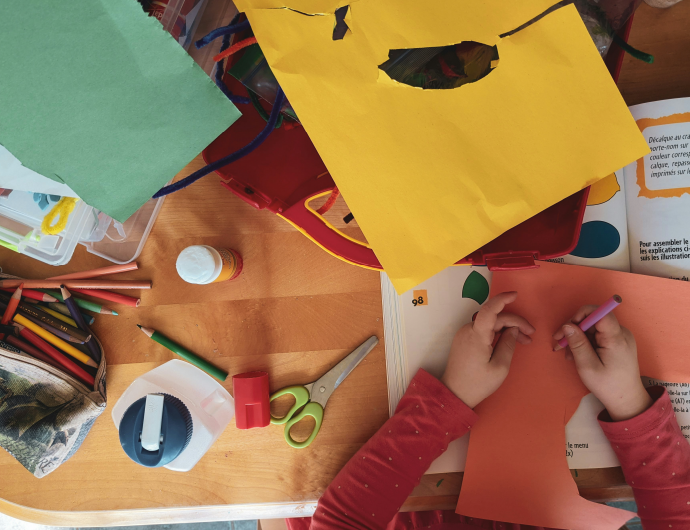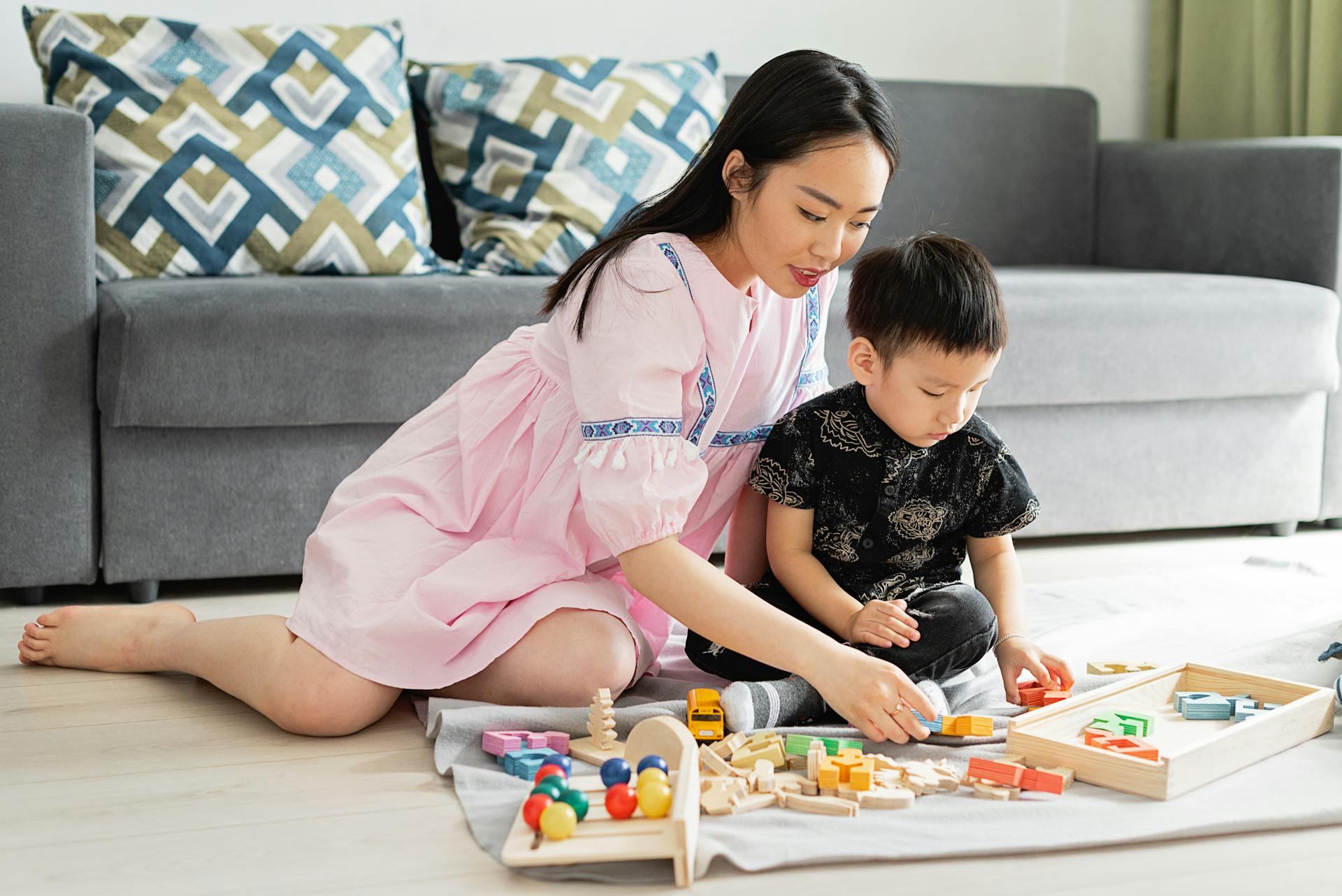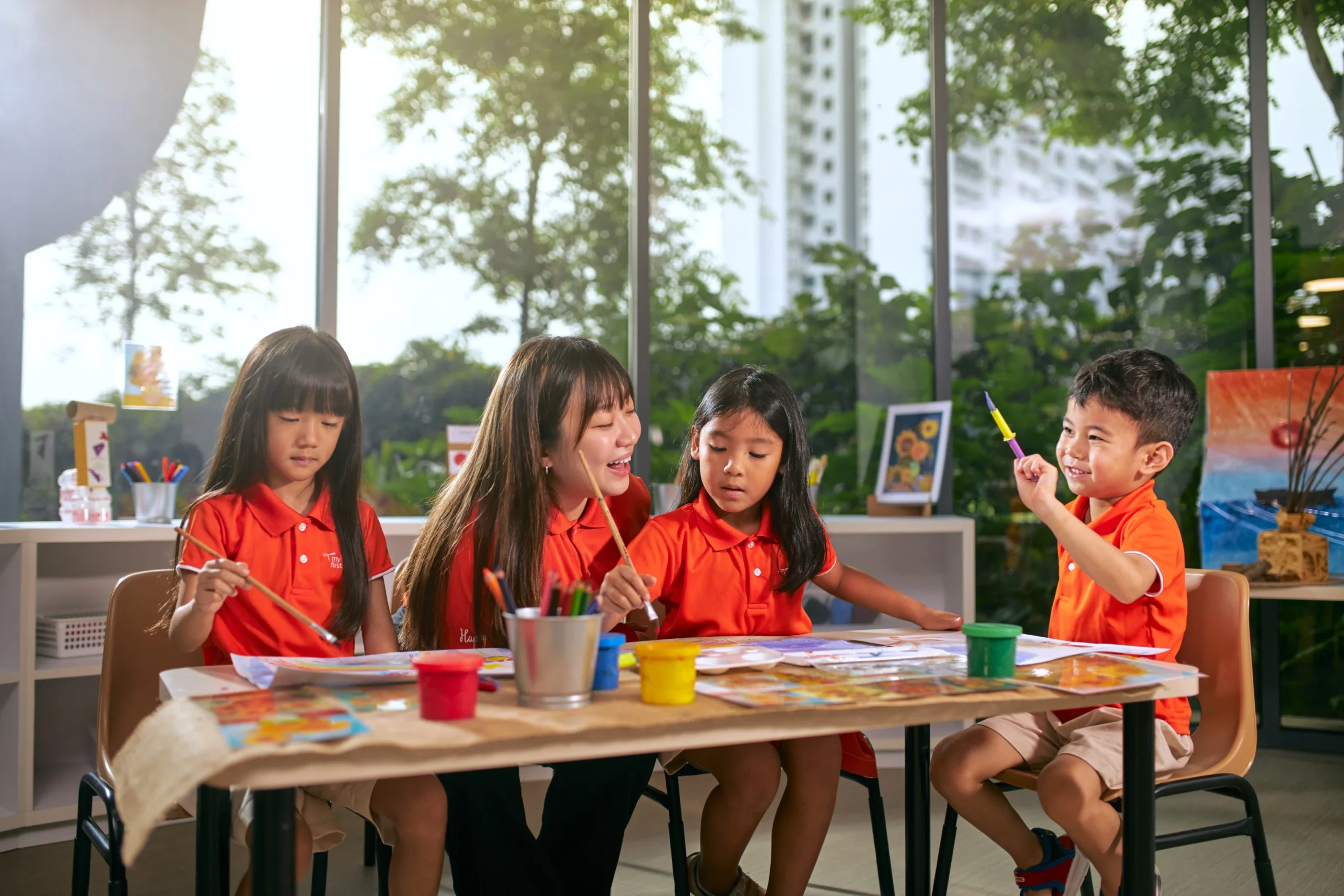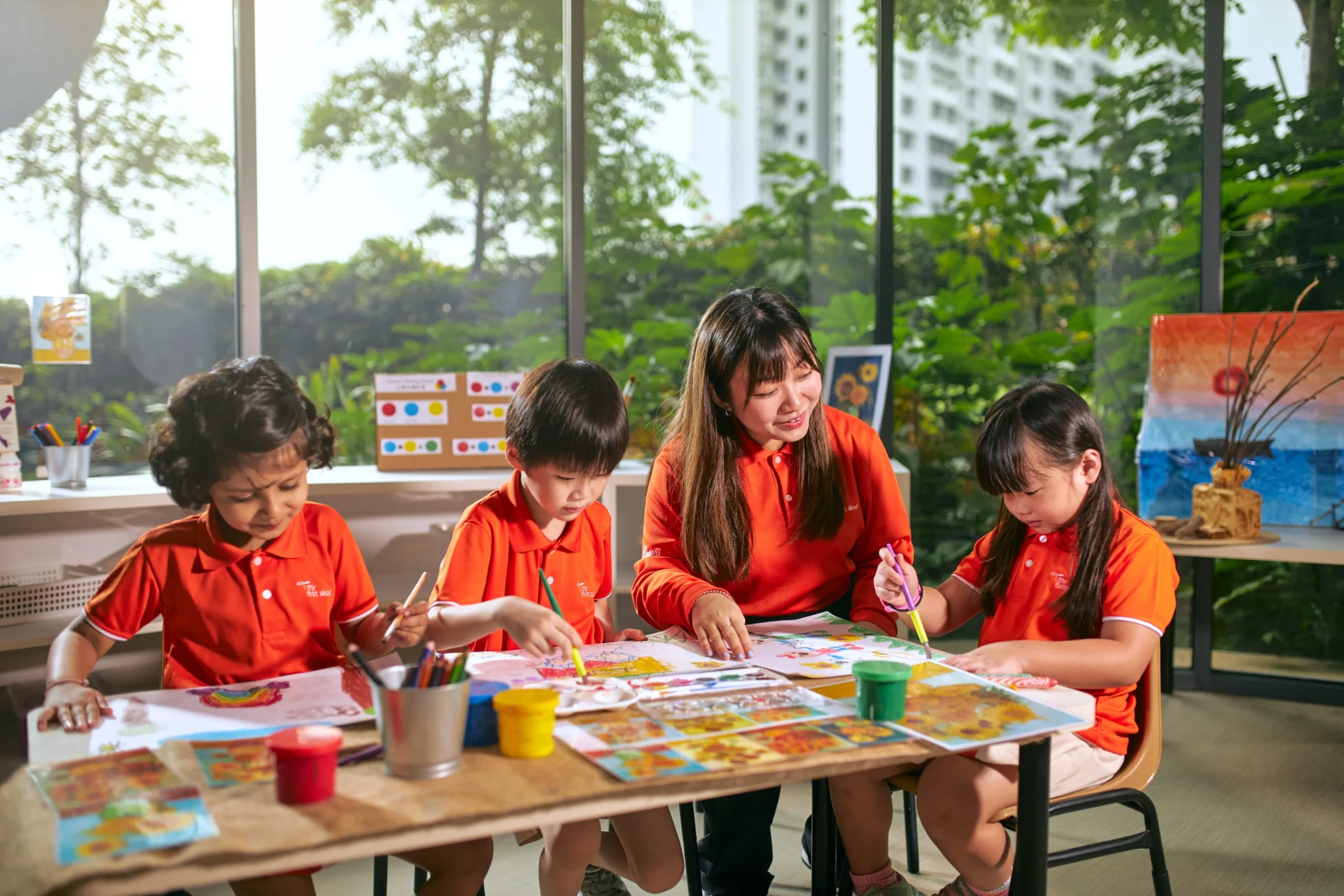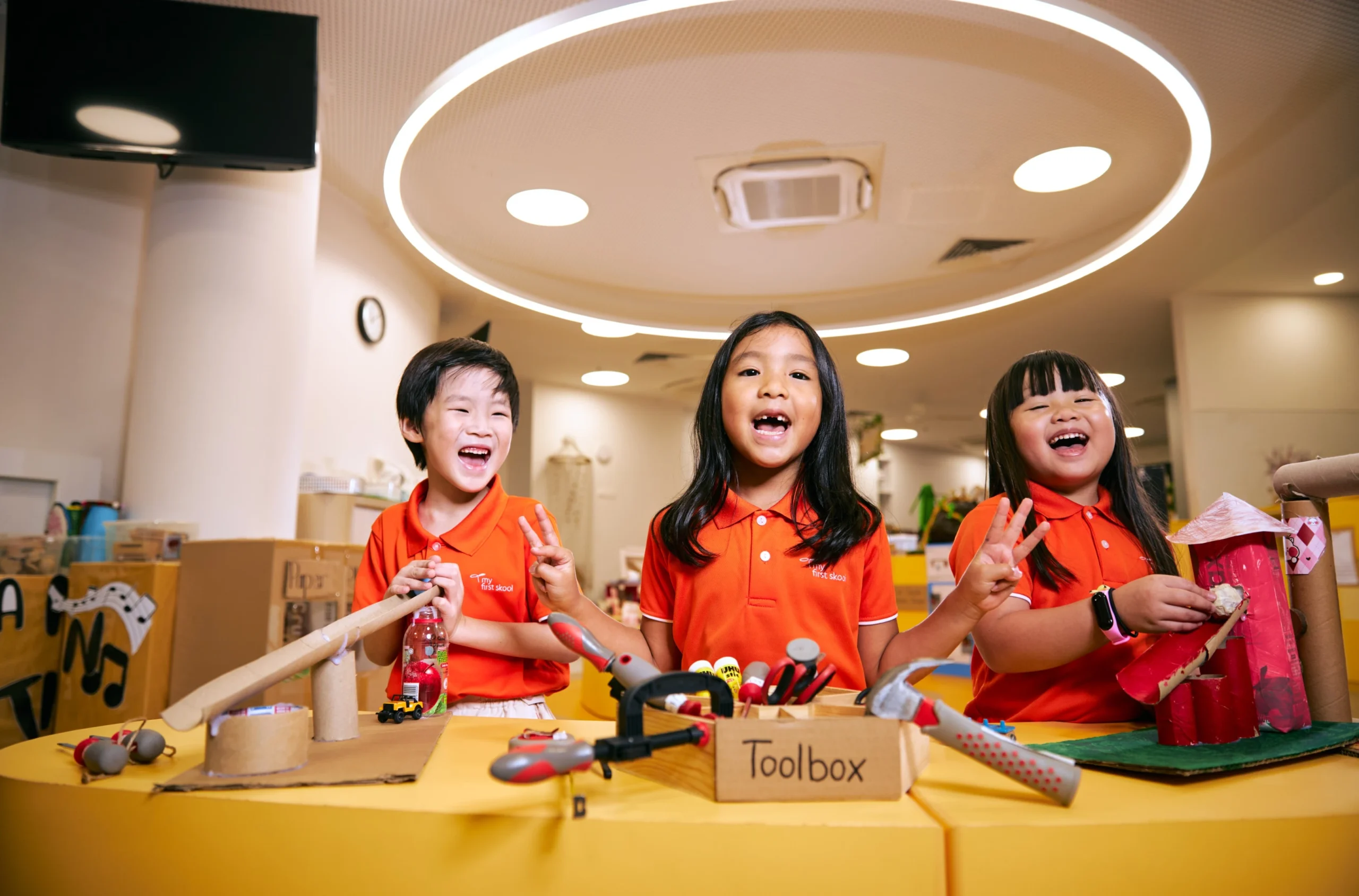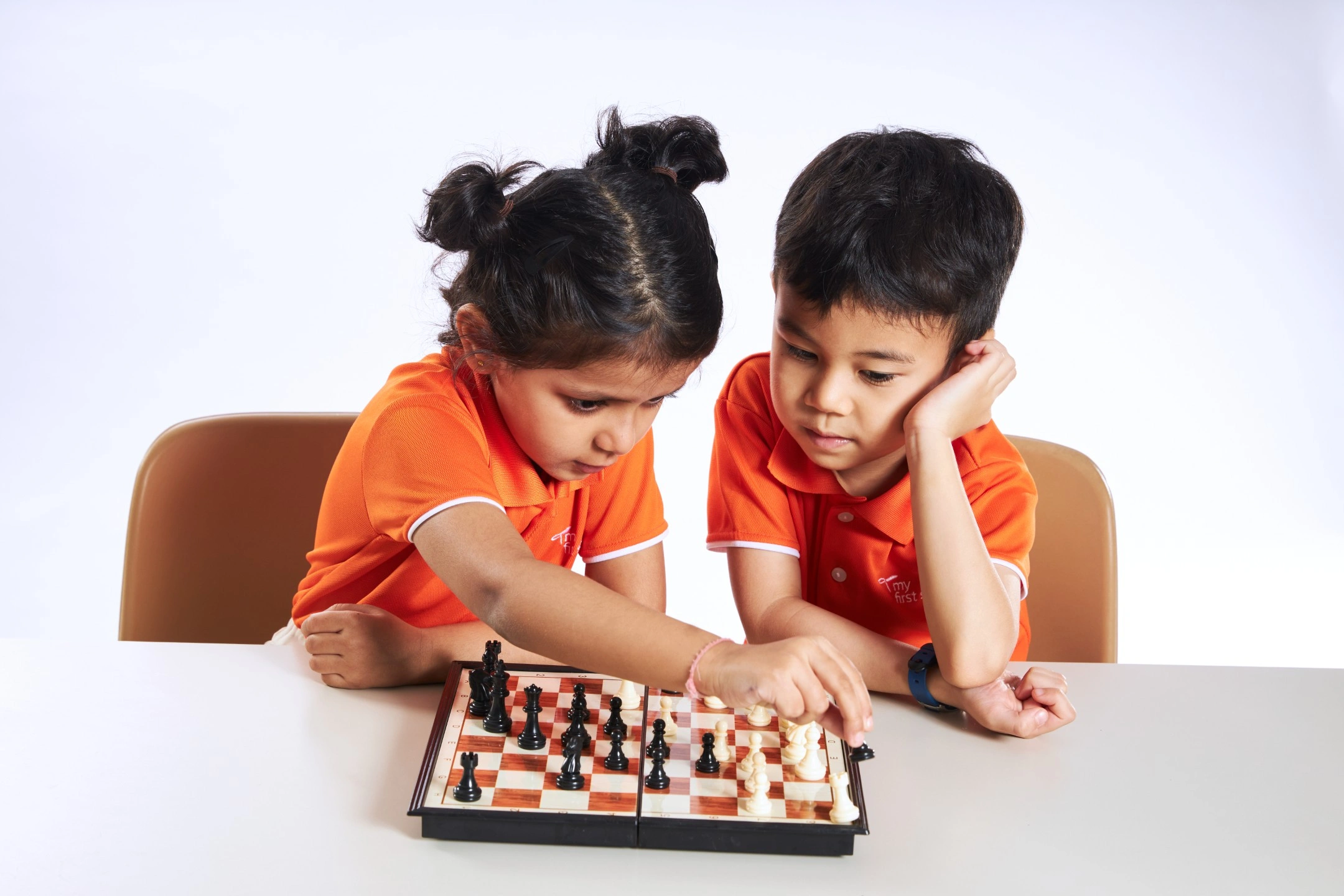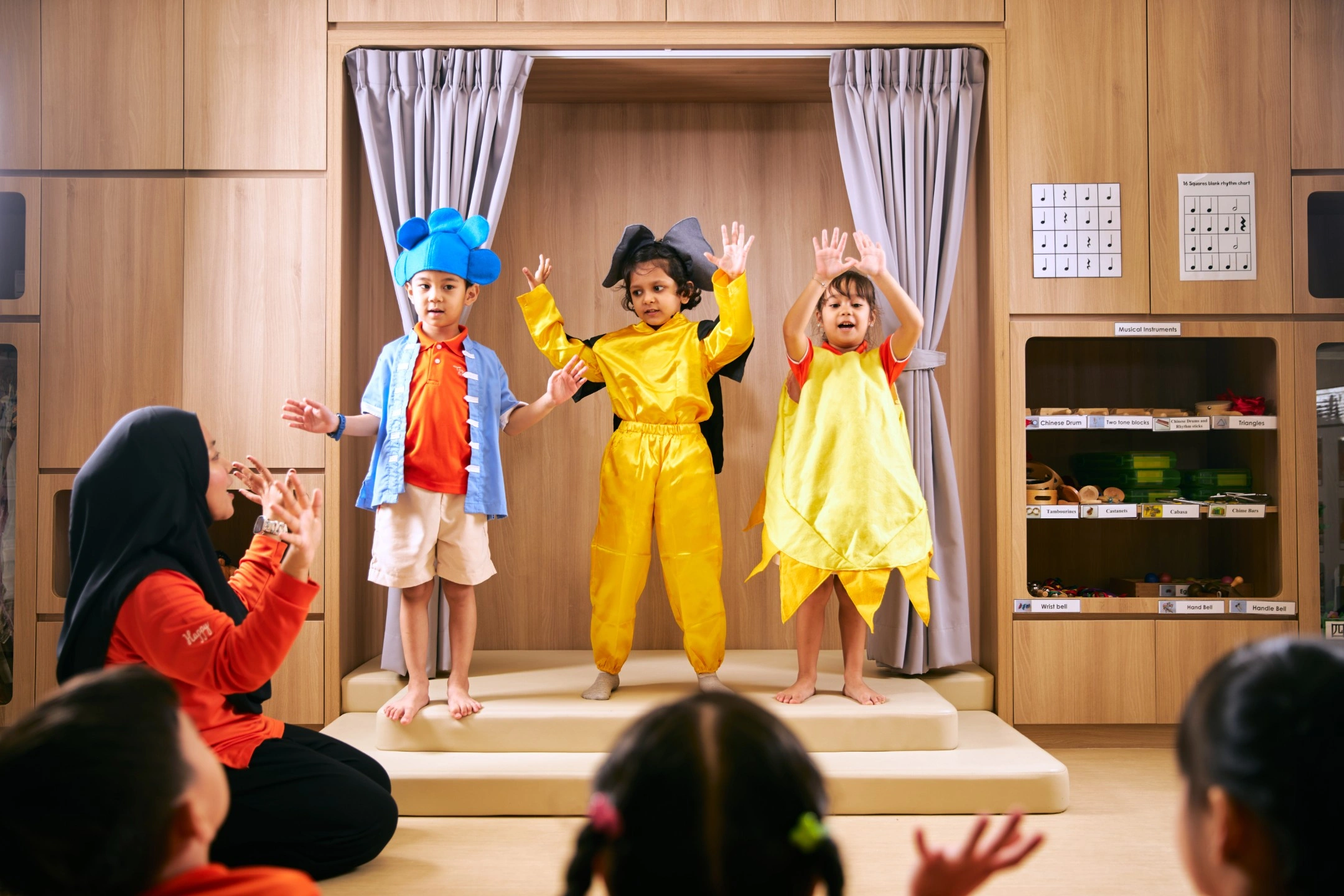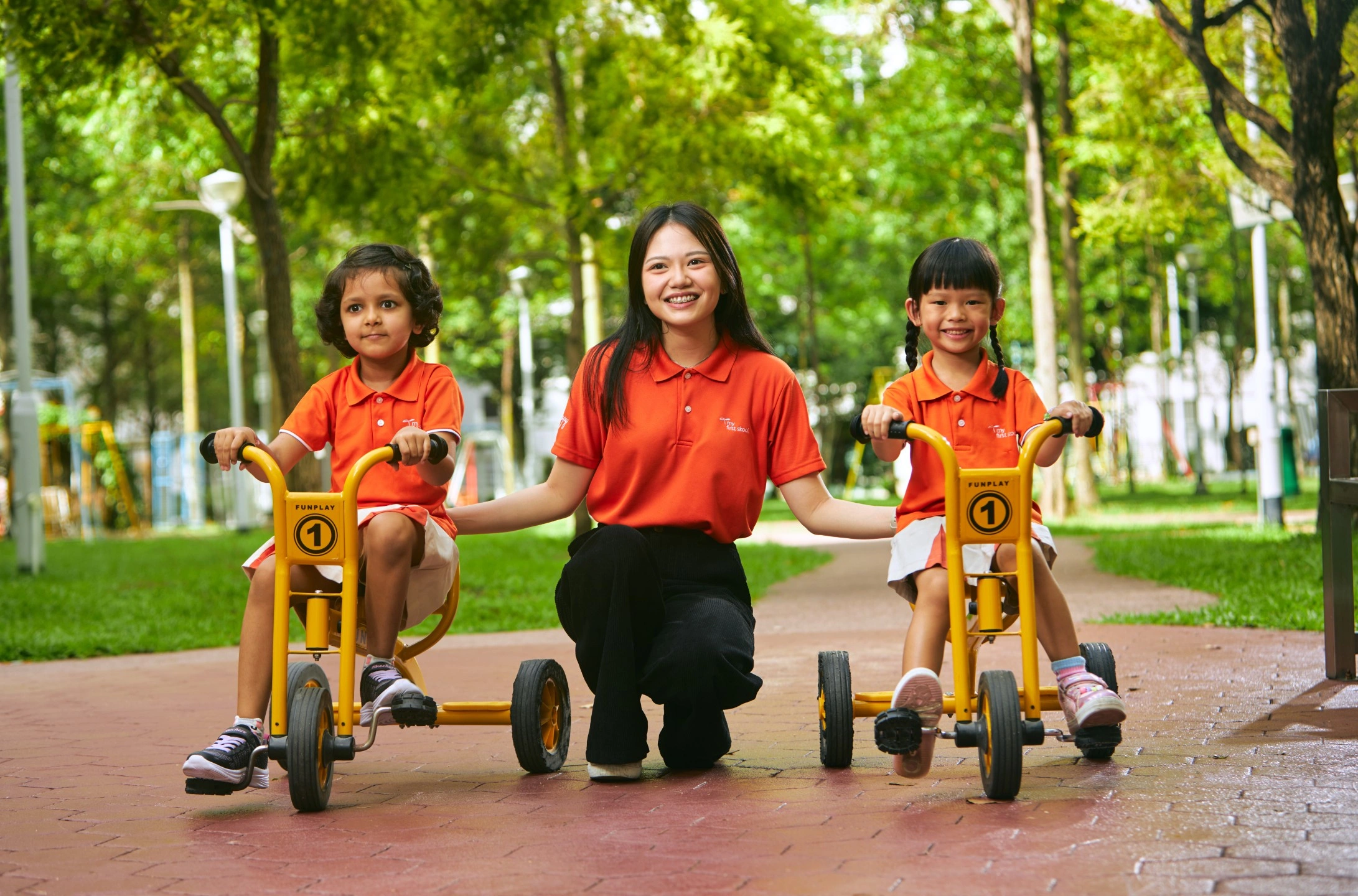How can we help?
Children Working with Recycled Materials
Positive Parenting
Environmental awareness
Singapore is a country with an excellent reputation for being environmentally aware of recycling needs and what can happen when recycling does not take place. There are many recycling procedures that are in place for families, and for organisations to use and also in early childhood centres these are in place. The curriculum in use for MFS classes takes account of recycling and awareness of this is raised with children. The Relationships Based Curriculum encourages teachers to make recycled toys and equipment to complement the required commercial equipment which is needed to fulfil licensing requirements.
Being aware of the need to conserve things in our environment then, is the responsibility of both educators and parents. If we can also make our children aware of protecting their environment and reusing materials. An important reason to raise the issue of environmental awareness is that children are growing up in a consumer-oriented society. Many of the toys sold in stores are very commercial and linked to films, videos and other commercial ideas, often featuring super-heroes, action figures or dolls which represent characters that children have seen. Whilst these toys may have a place in children’s play, many experts believe that over-use of such play things can limit the “scripts” that children use in their imaginative play. Figurines of specific characters and items made for particular purposes control children’s play and may limit their imagination for they can only be used in one way. Toys that can be played with in many different ways are better and parents need to understand that not all toys can stimulate creativity and provide cognitive benefits for children. Rather than being limited by the characters portrayed by commercial toys or their functions, simple things allow a child to structure their play in different ways and think creatively in their play.
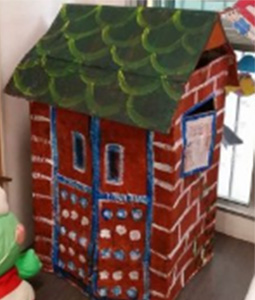
In the home context there are many potential recycled items that come daily into the home and some of these are safe to be used with your children to complement the commercial toys families buy. However, we emphasise the importance of safety. For example, styrofoam is not a suitable product to use as it can break easily and be ingested by small children. However, there are many other safe materials that can be used such as large cardboard boxes which make wonderful play houses and tunnels or turn paper bags into puppets. Old magazines can be turned into colourful decorations or collages and table calendars can be transformed into photo albums. Toilet paper rolls and egg cartons are useful materials for art and craft. When children outgrow their clothes, use them to dress up dolls and adult clothes can be used to promote dramatic play.
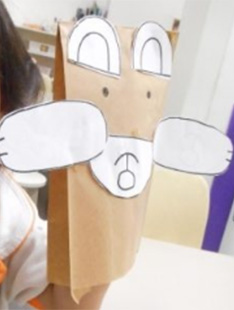
Other safety factors to keep in mind are:
- Don’t use plastic bags for use or play with young children
- Provide enough space using tables or floors for free movement.
- Make sure the recyclable materials are safe, clean and hygienic.
- Check for any toxic paint.
- Keep small, loose parts away from young children.
- Make sure that there are no staples or sharp edges in materials.
- Place materials on low shelves for children to access them easily.
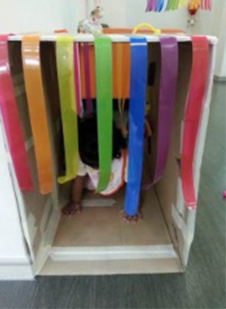
Recycled materials offer open-ended learning opportunities
In contrast to the consumer toys mentioned earlier, these are materials that can be used and manipulated in different and creative ways by young children. Features of such open-ended materials are that they:
Other safety factors to keep in mind are:
- can be put together, taken apart, redesigned, rolled, stacked or carried and used in multiple ways depending on the age, competence and interest of the child.
- can be explored freely and used by children in any way without being bound by any limitations.
- can be natural (for example twigs, leaves, shells and stones) or recyclable man-made objects (for example, bottle caps, toilet paper rolls, cardboard boxes and containers).
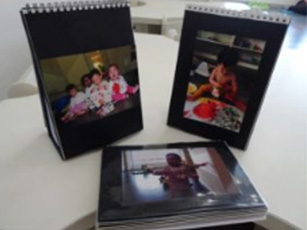
Benefits of playing with recycled, open-ended materials
In contrast to the consumer toys mentioned earlier, these are materials that can be used and manipulated in different and creative ways by young children. Features of such open-ended materials are that they:
Other safety factors to keep in mind are:
- As young children use recyclable objects in different ways, it triggers their imaginative play, builds creativity and problem solving skills.
- With older children, making home-made toys from scratch provides a good opportunity for extending their imagination and skills.
- Children learn about their own environment as they manipulate different materials.
- Children also learn about and enjoy the process of creating or building things.
- Recycled materials may foster child initiated play. Many of the objects and materials found in the environment will foster thinking in children for they are open-ended.
- From around the age of 2 years and onwards, children will begin to engage in dramatic play, which is essential for the development of thinking skills. When children make their own play things this helps to create an environment that supports such play.
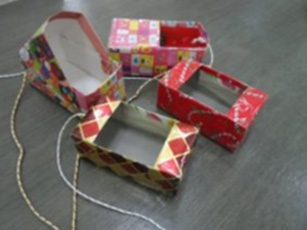
- As children make their own creations and toys, they get opportunities to make their own choices and decisions which help to develop confidence and independence.
- Children are able to express themselves freely.
- Language development – Making things out of recycled materials gives children the opportunity to talk about what they have made in words, how they made it and how it
- Designing and creating things from scratch helps develop a sense of ownership in children.
- They are inexpensive and hence provide enjoyment at a very low cost.
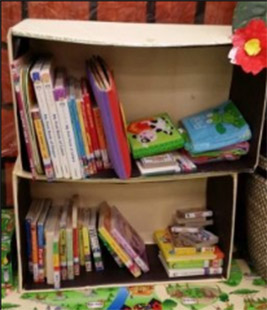
Concluding comments
Recyclable materials are open-ended and provide more learning opportunities for children than some commercially made toys that may be used only in one way, limiting children’s creativity and imagination. Encouraging children to recycle and reuse everyday objects makes our children aware of the need to protect our planet.
Copyright © Marjory Ebbeck and Sheela Warrier 2017
All rights reserved. No part of this publication may be reproduced, stored in a retrieval system, or transmitted in any forms or by any means, electronic, mechanical, photocopying, recording or otherwise, without the prior permission of the Copyright holder.
